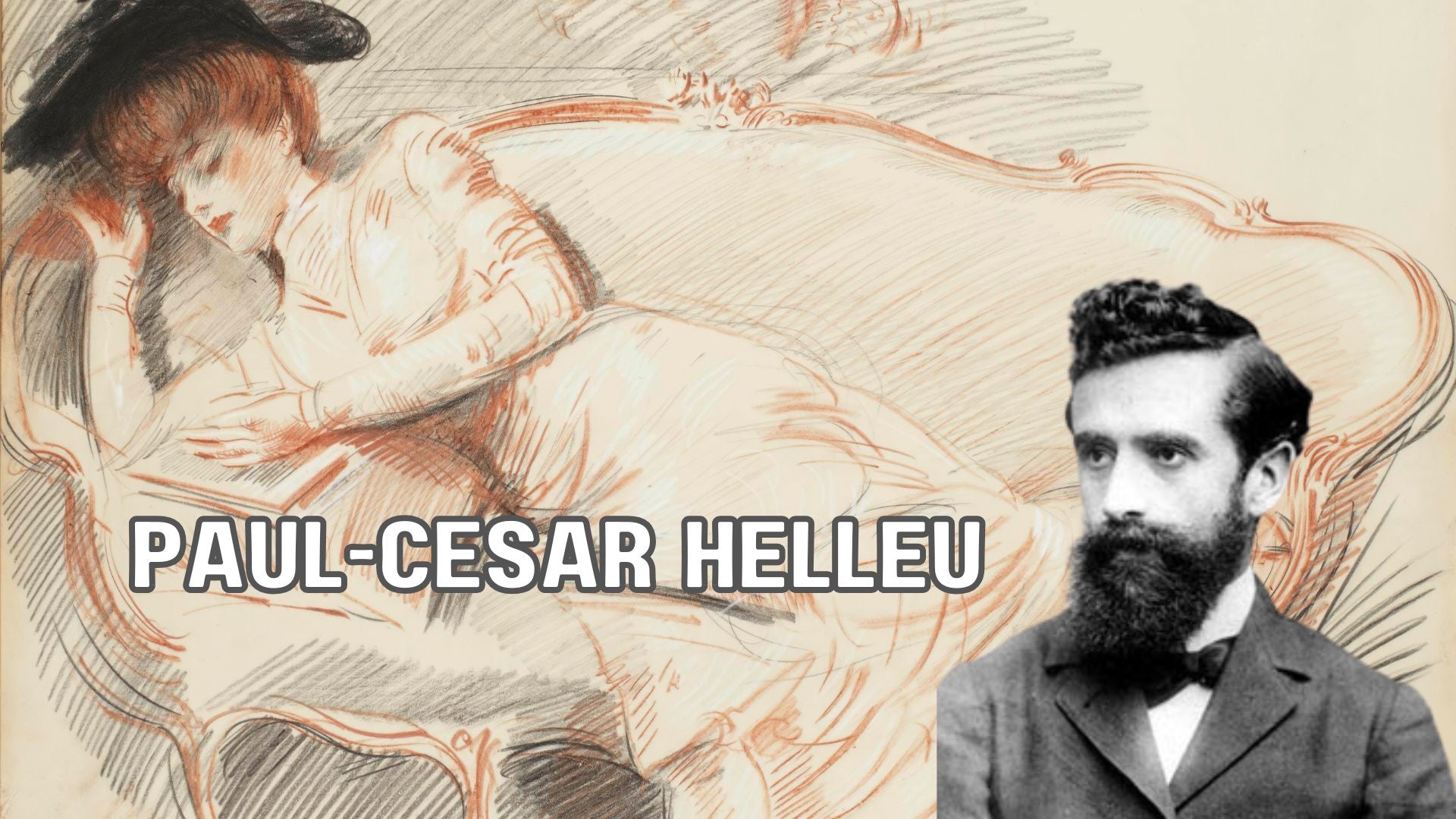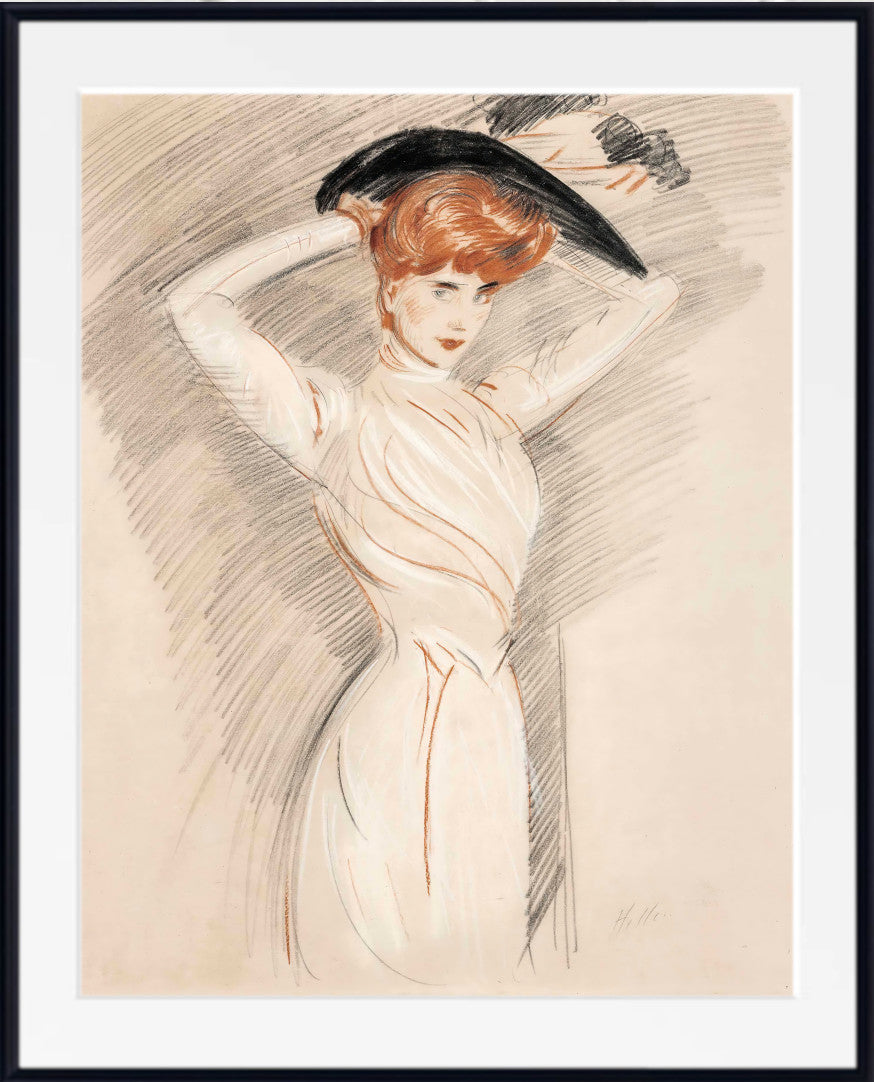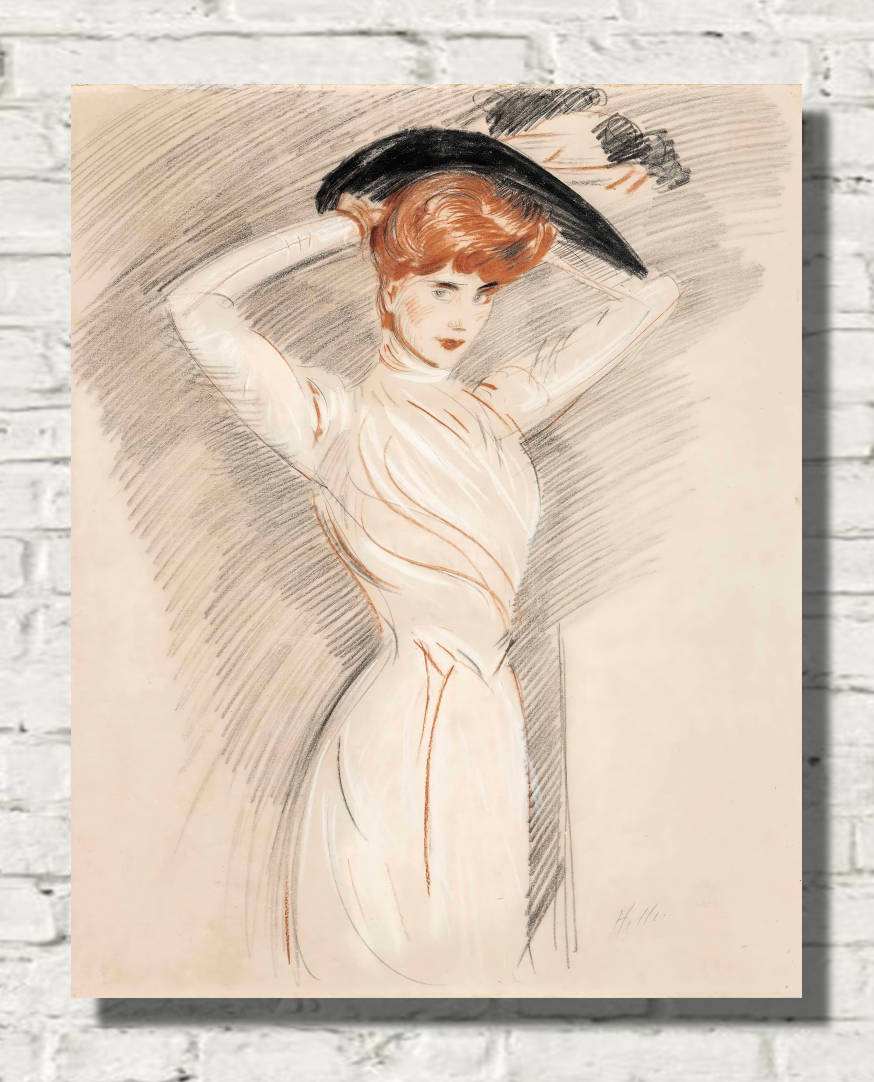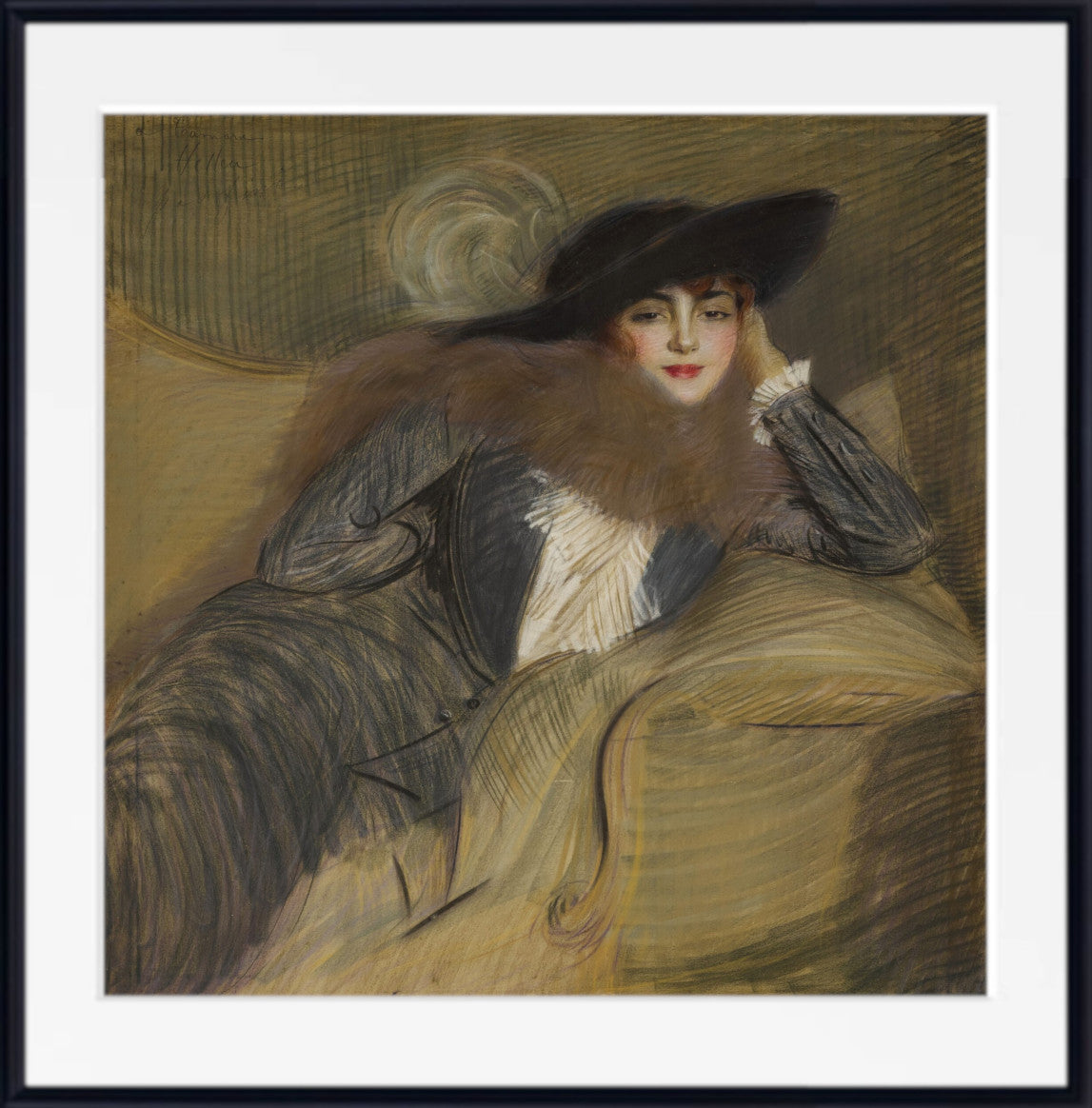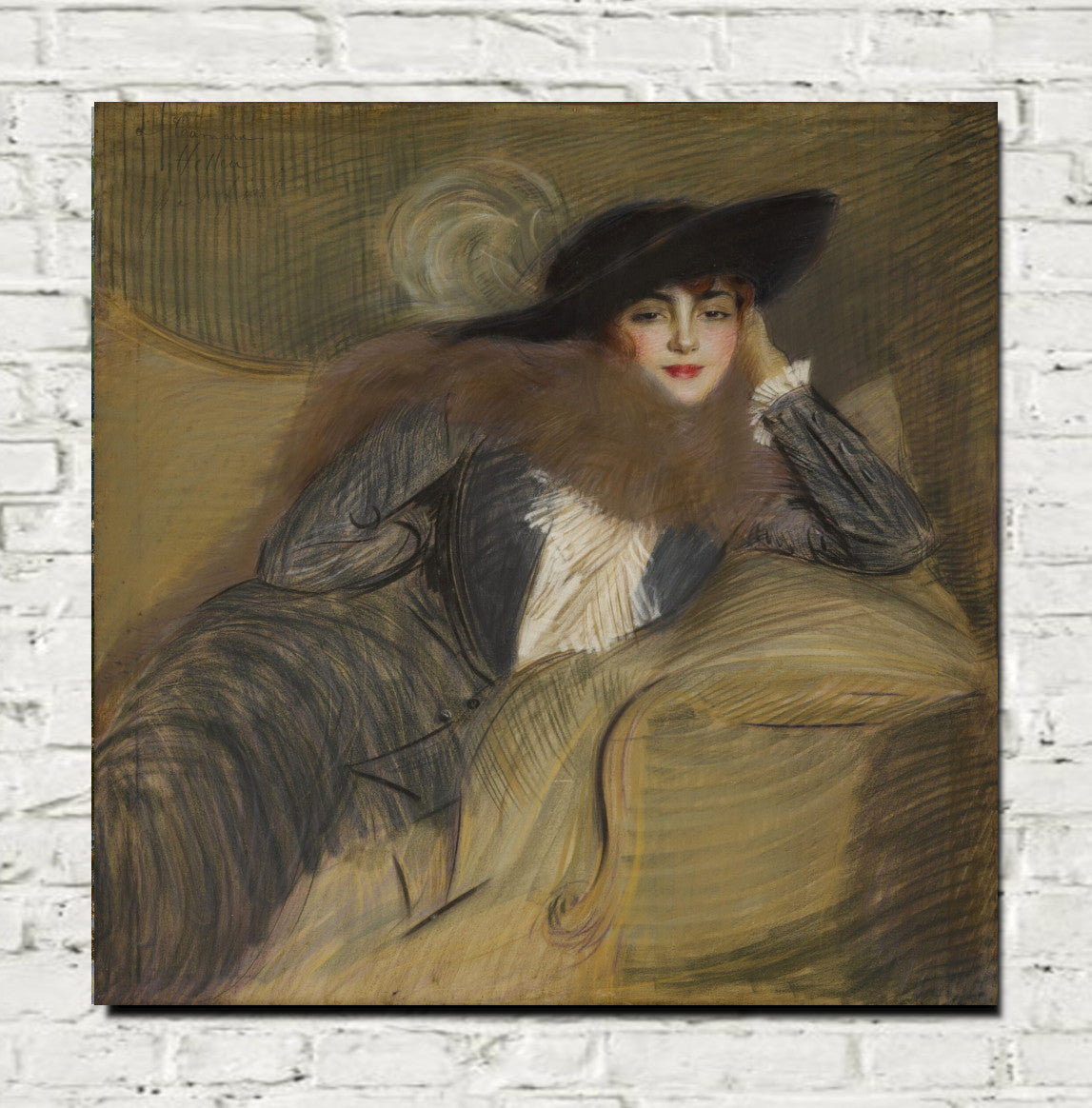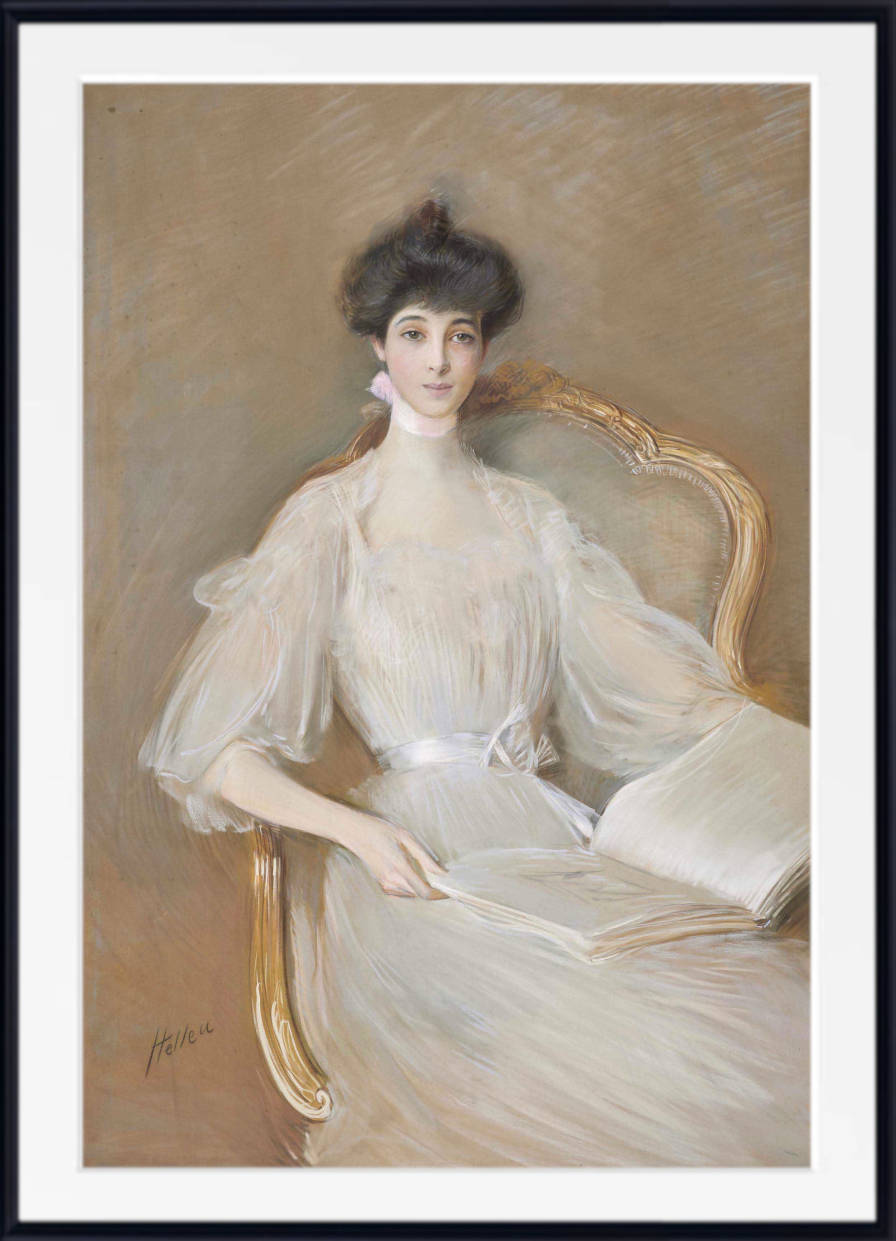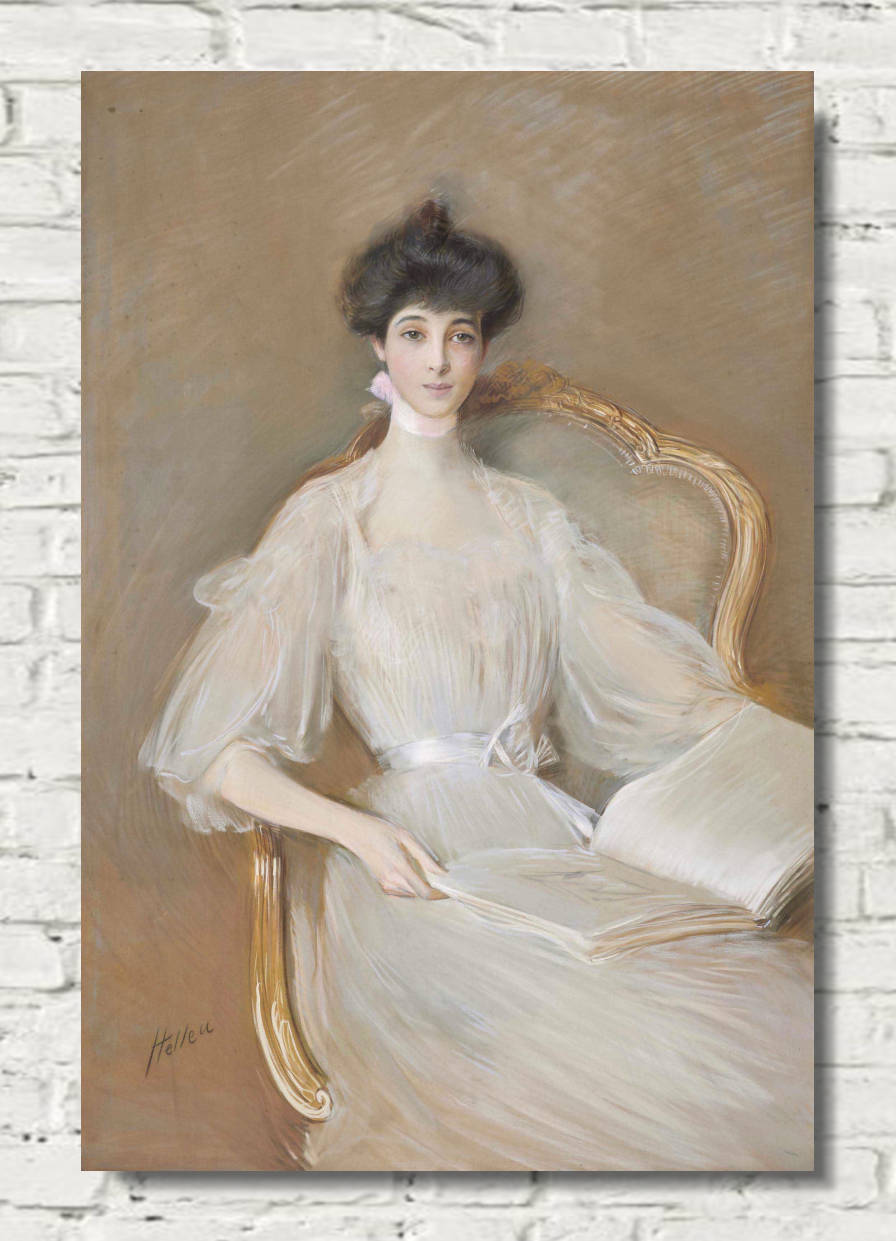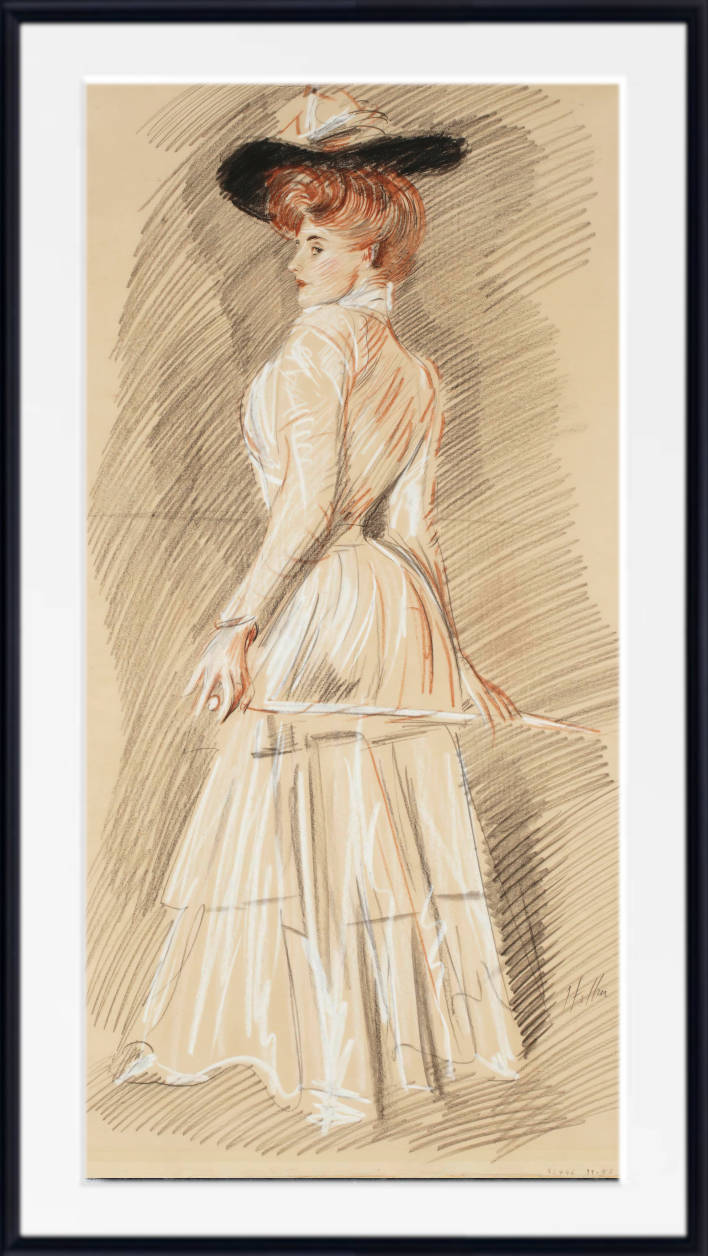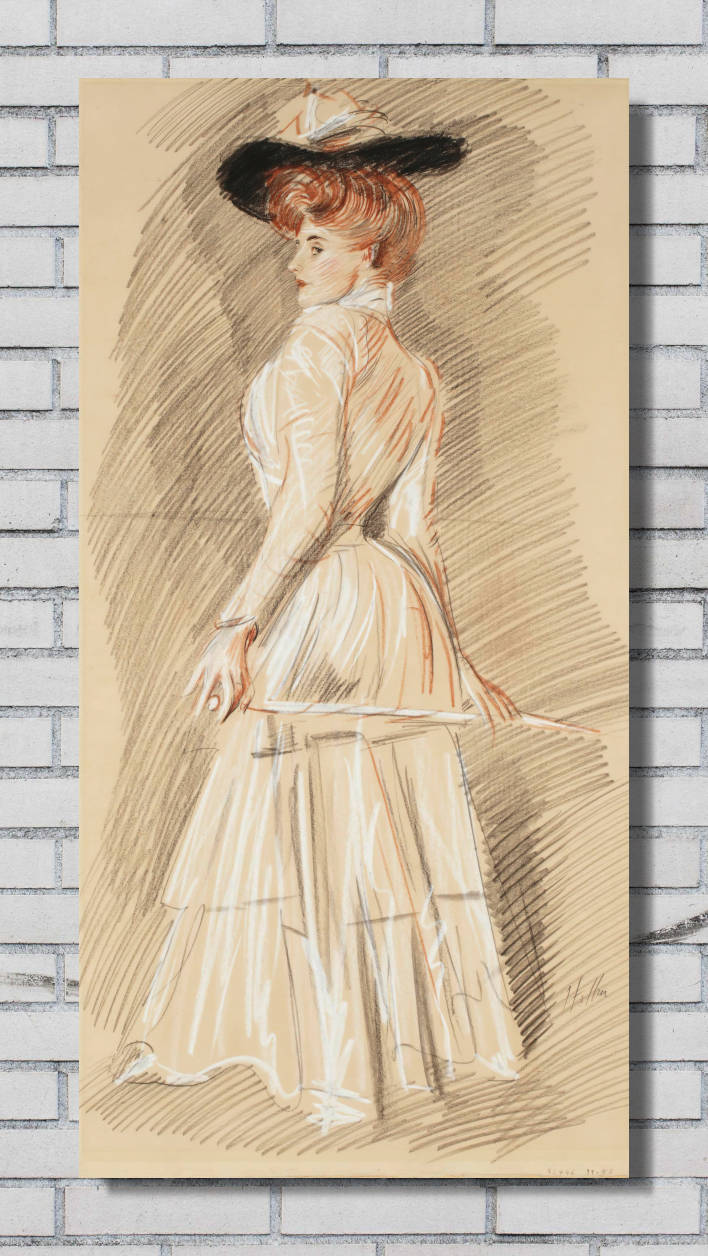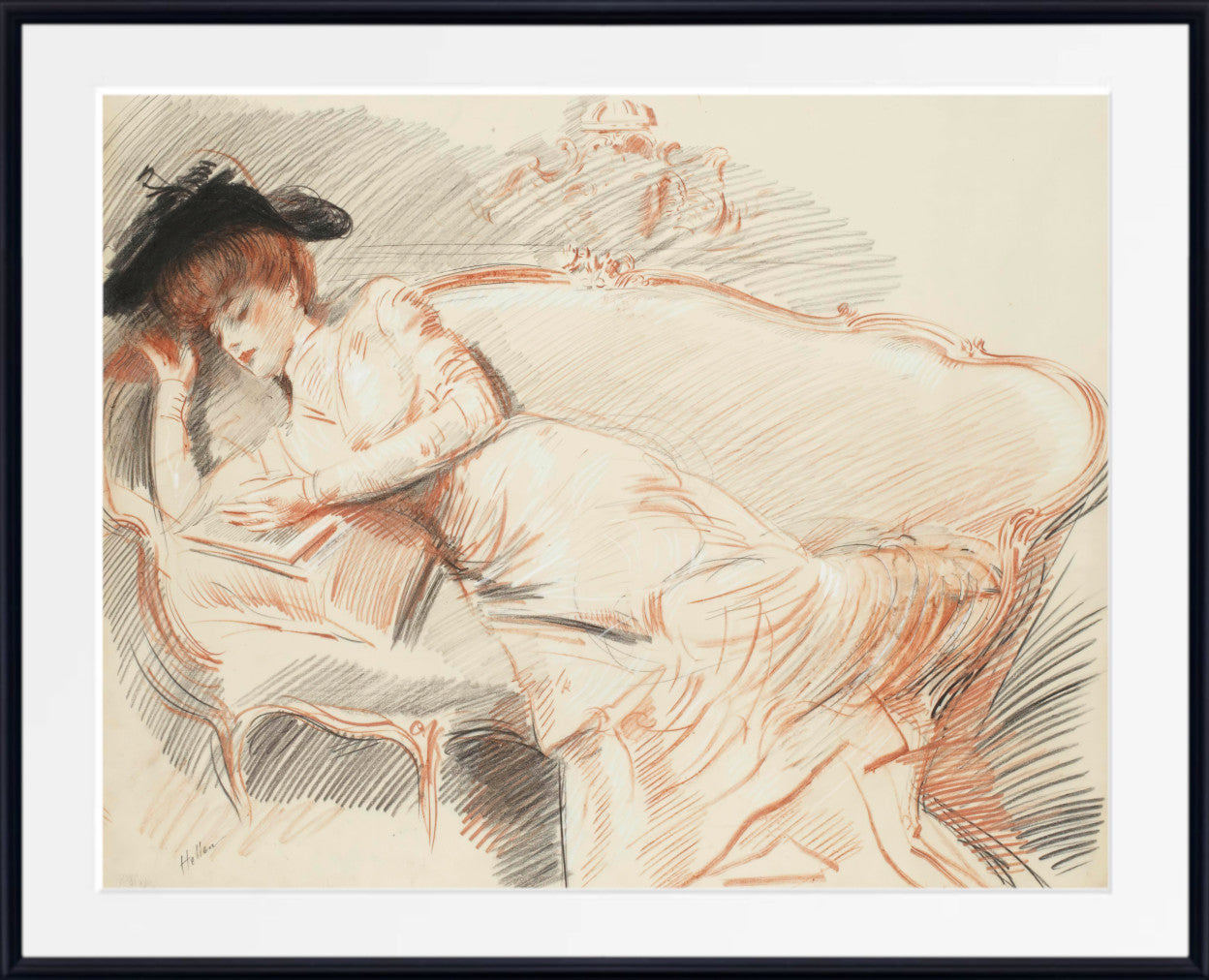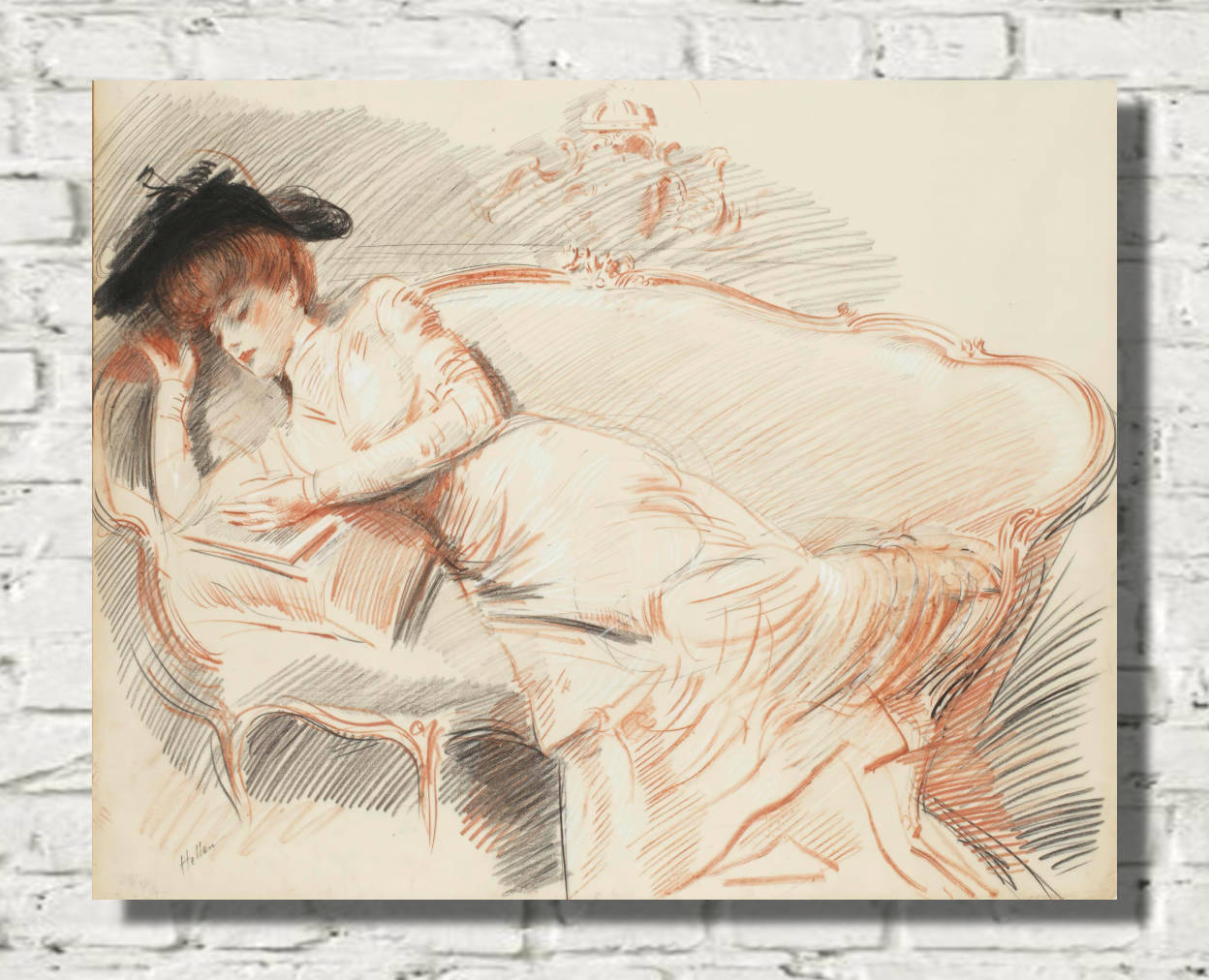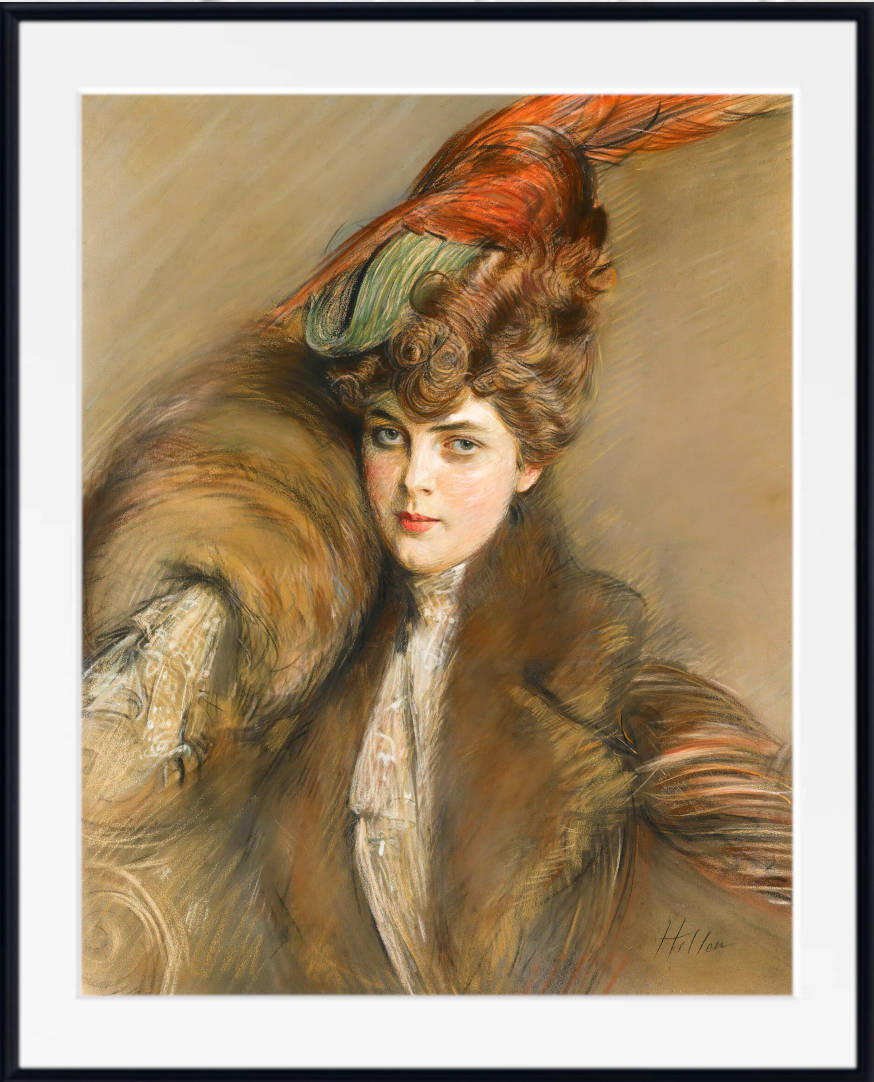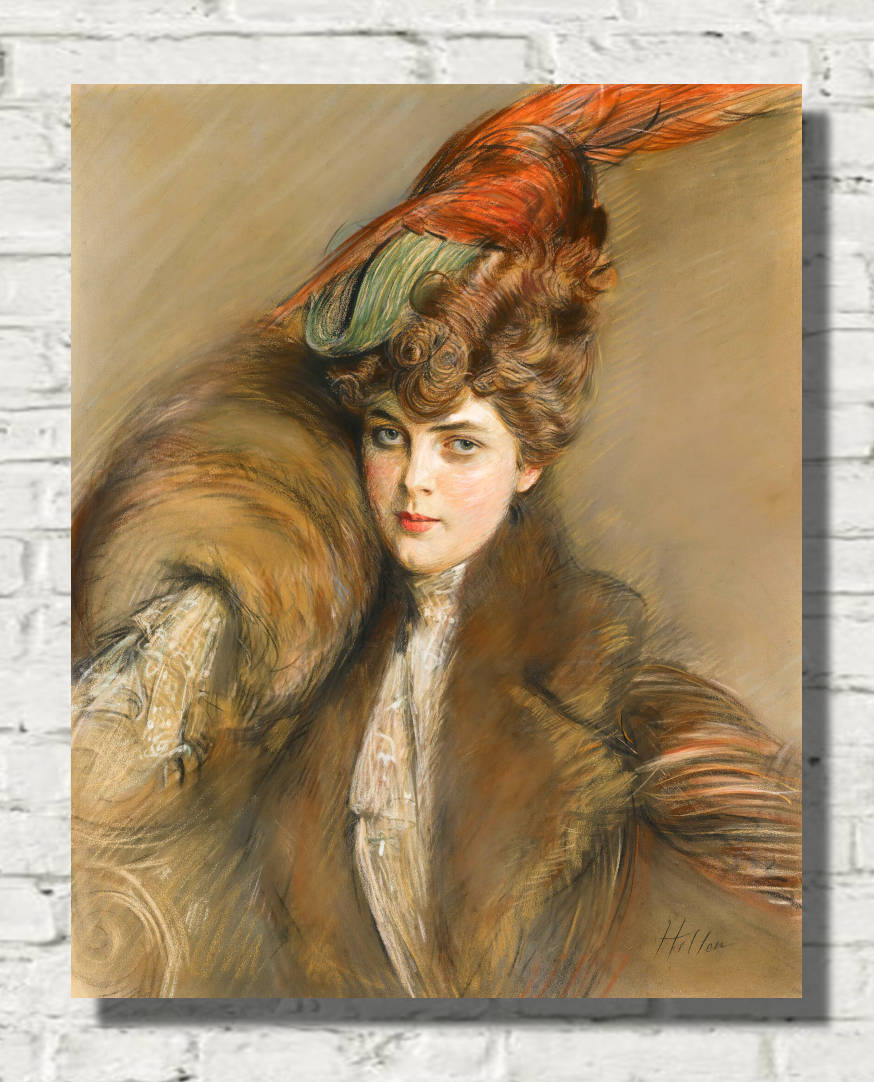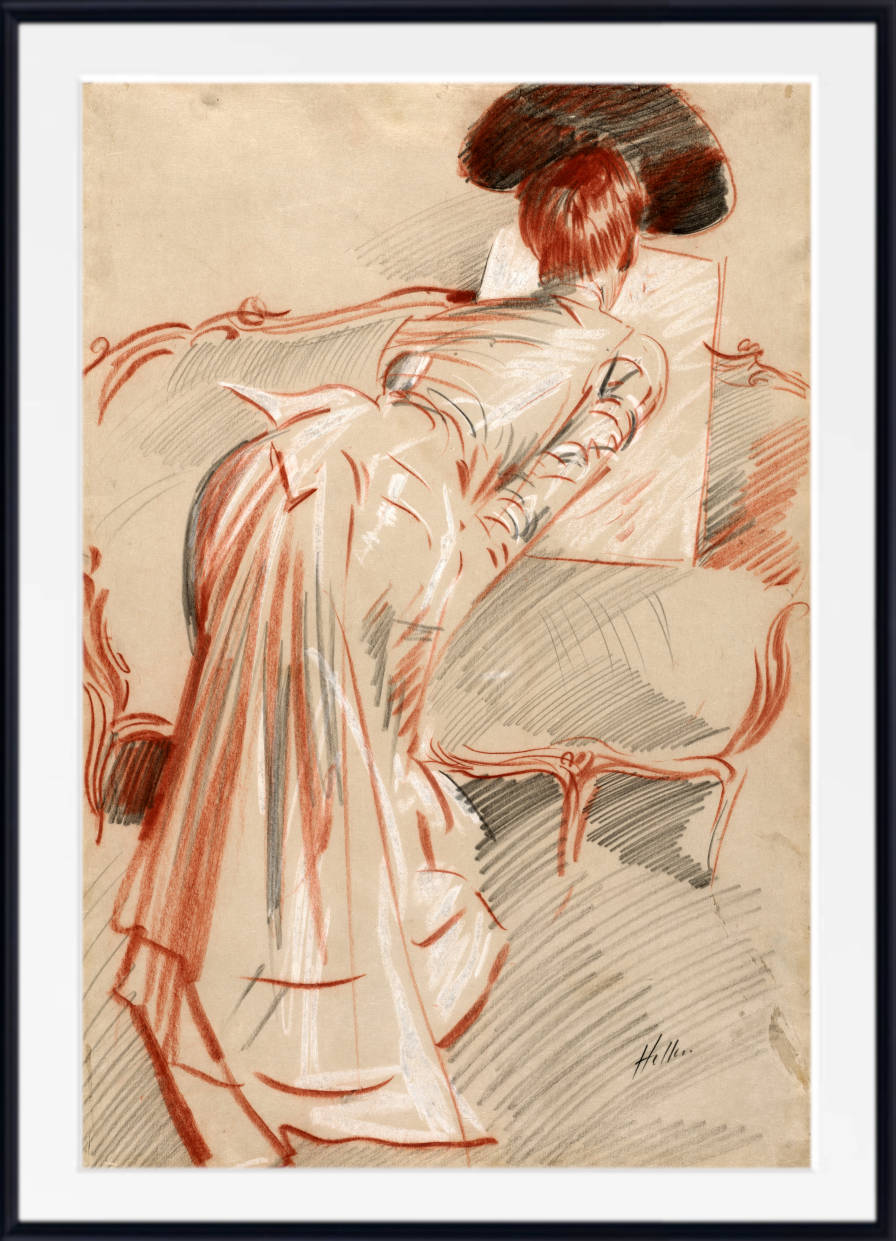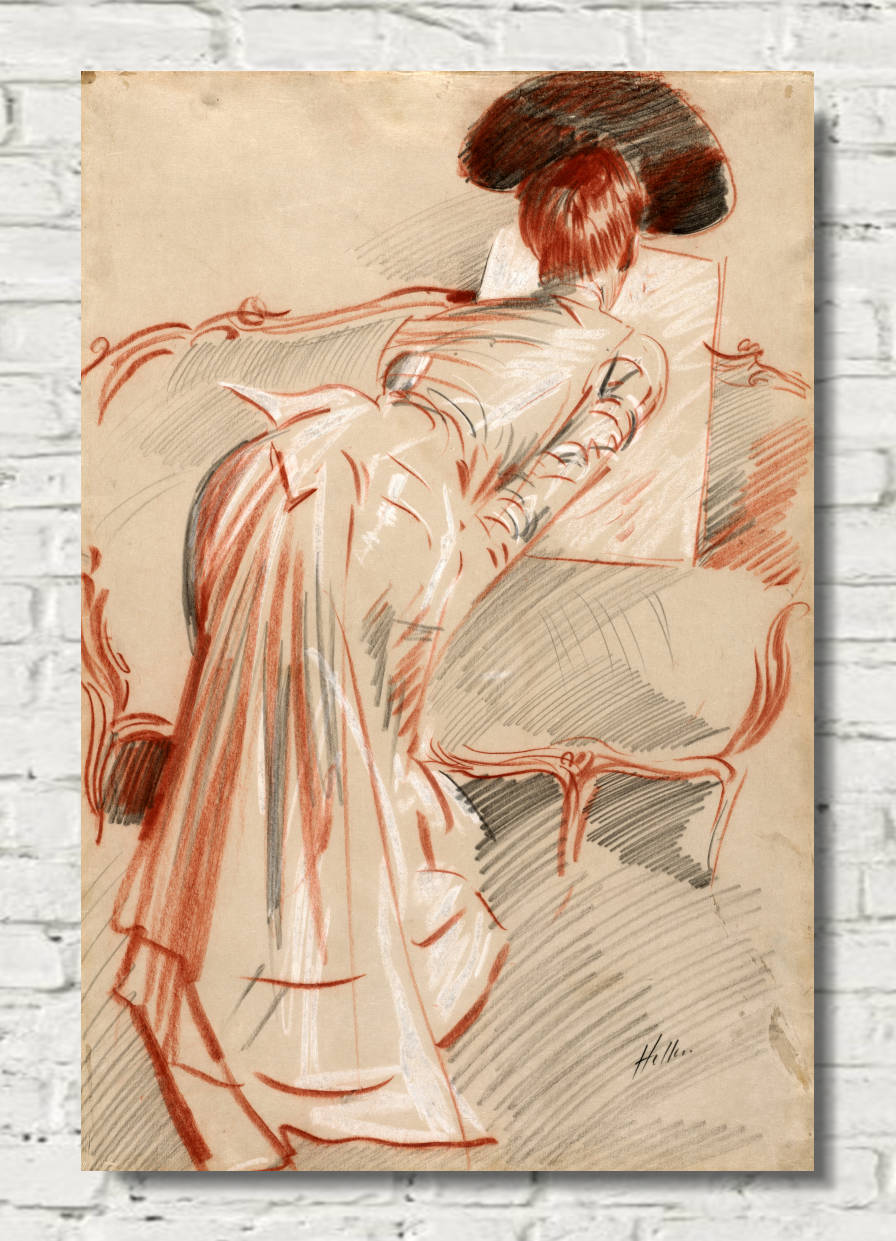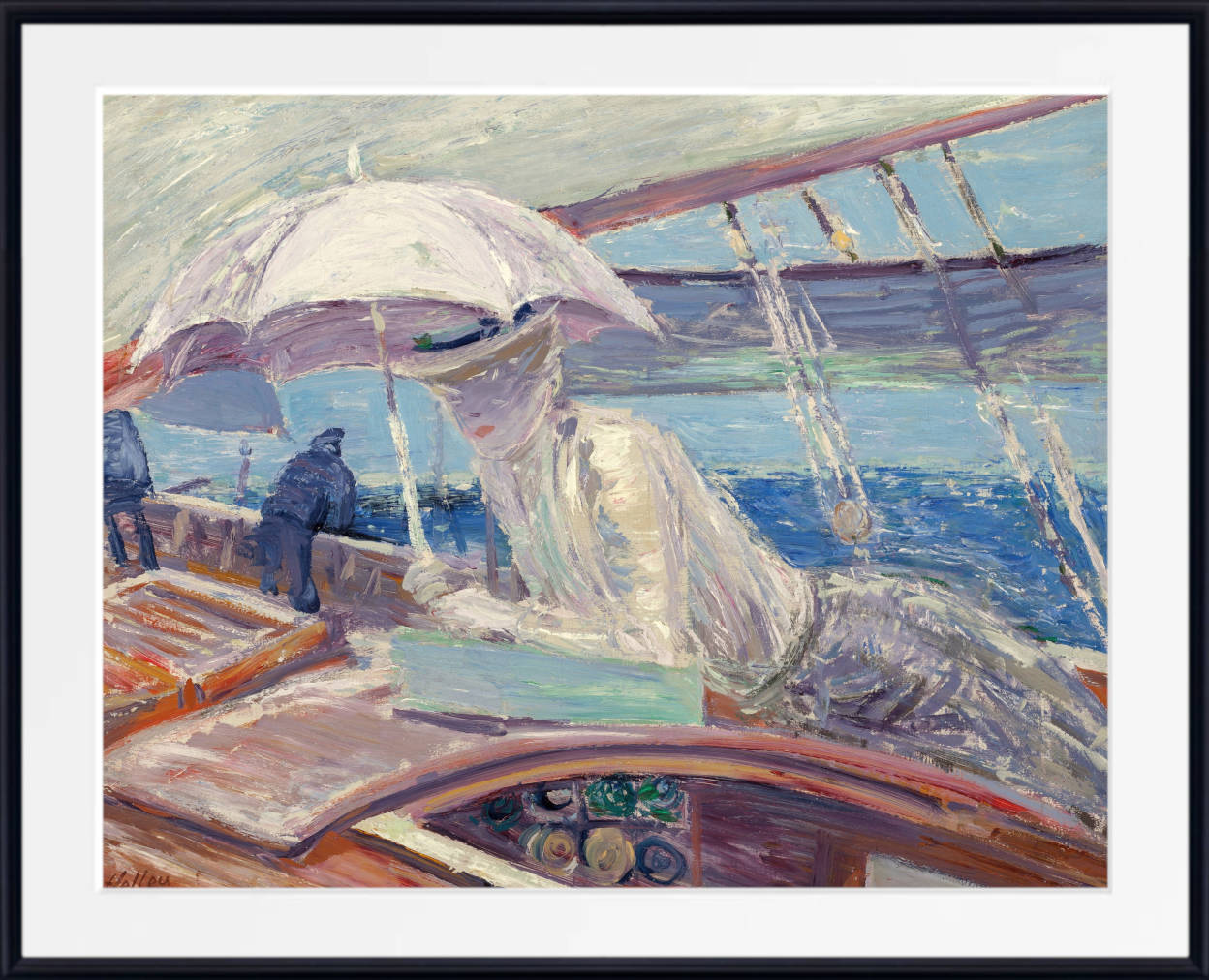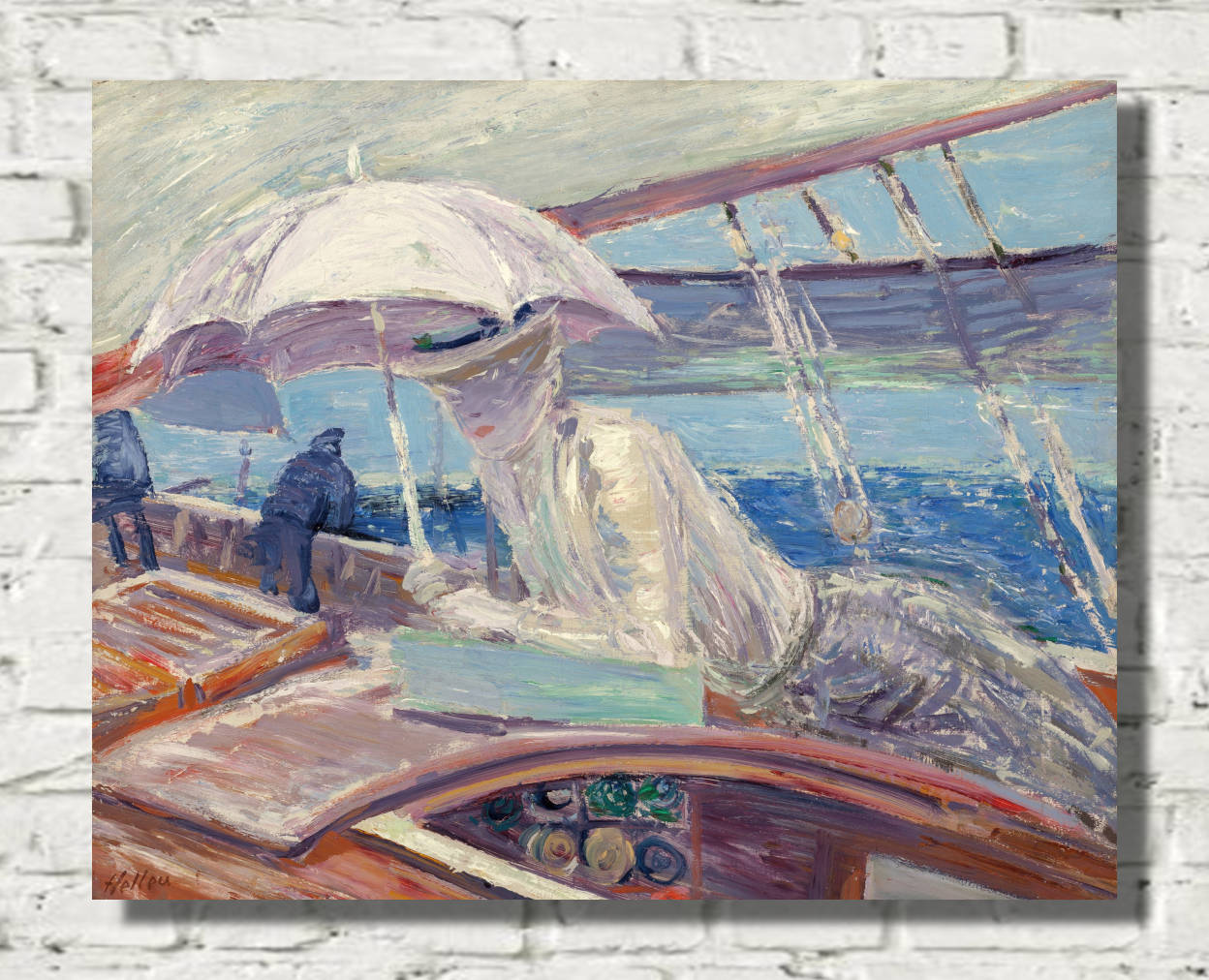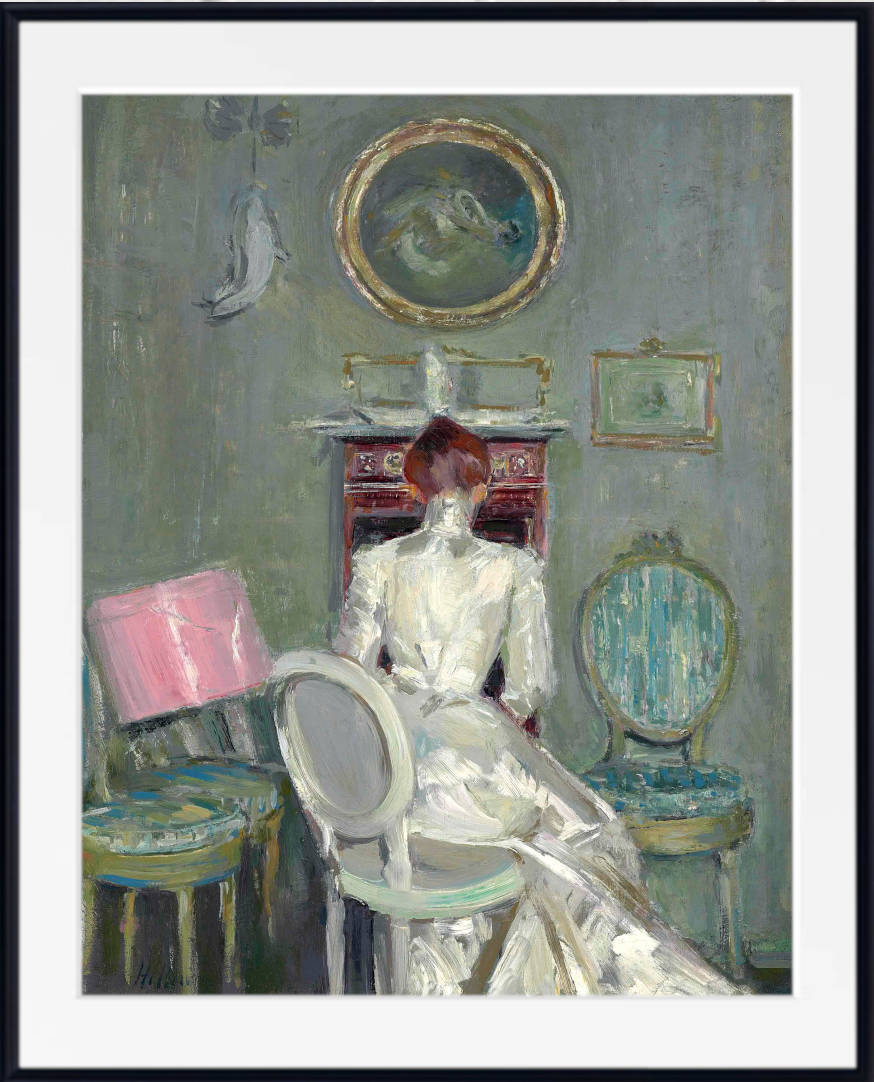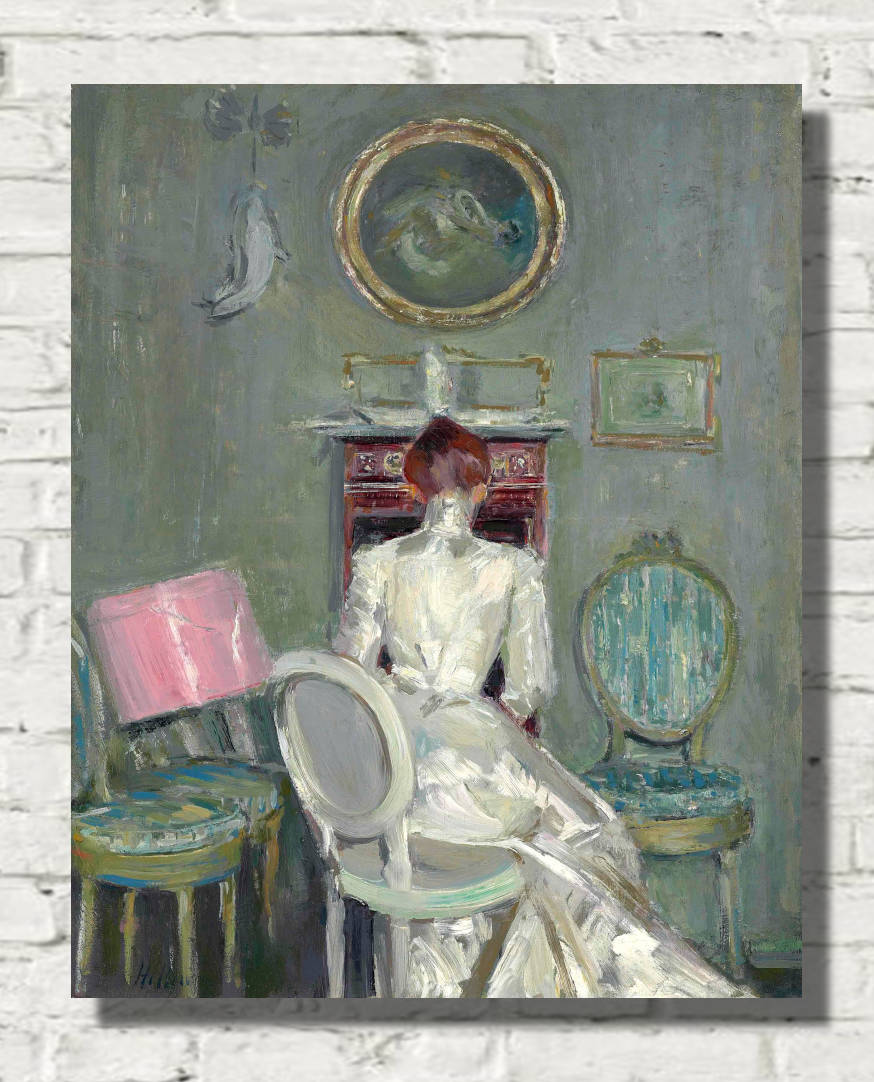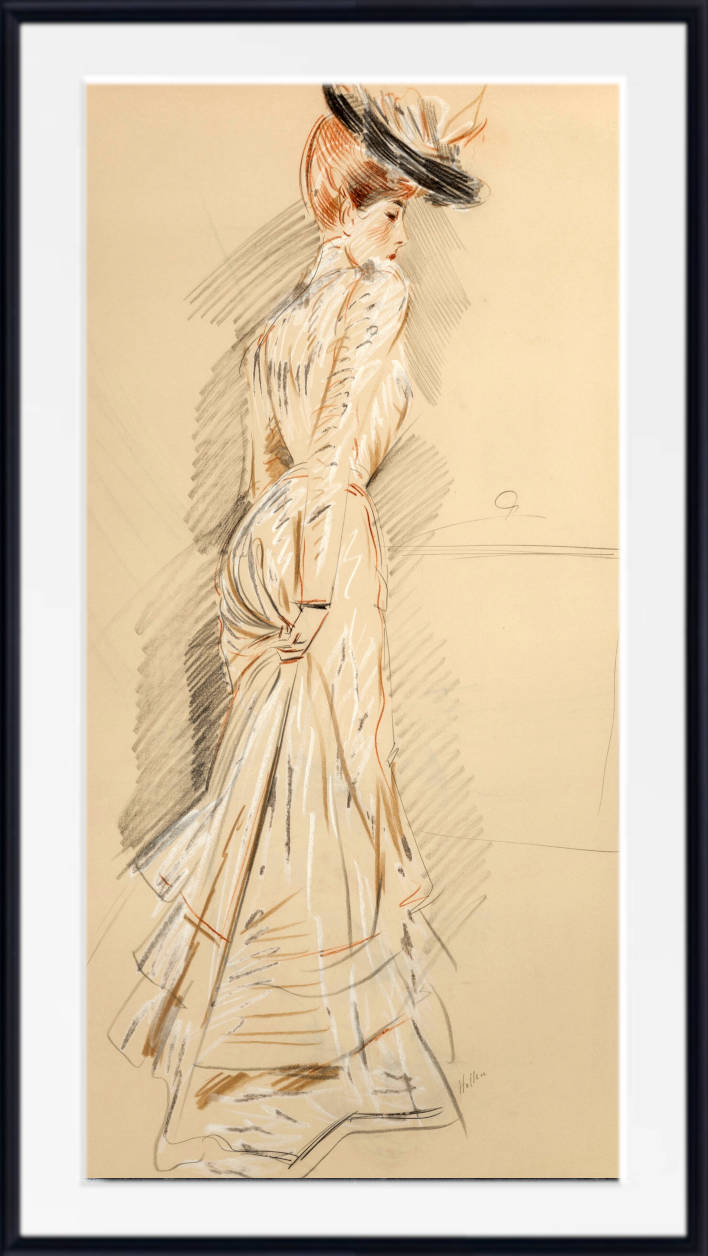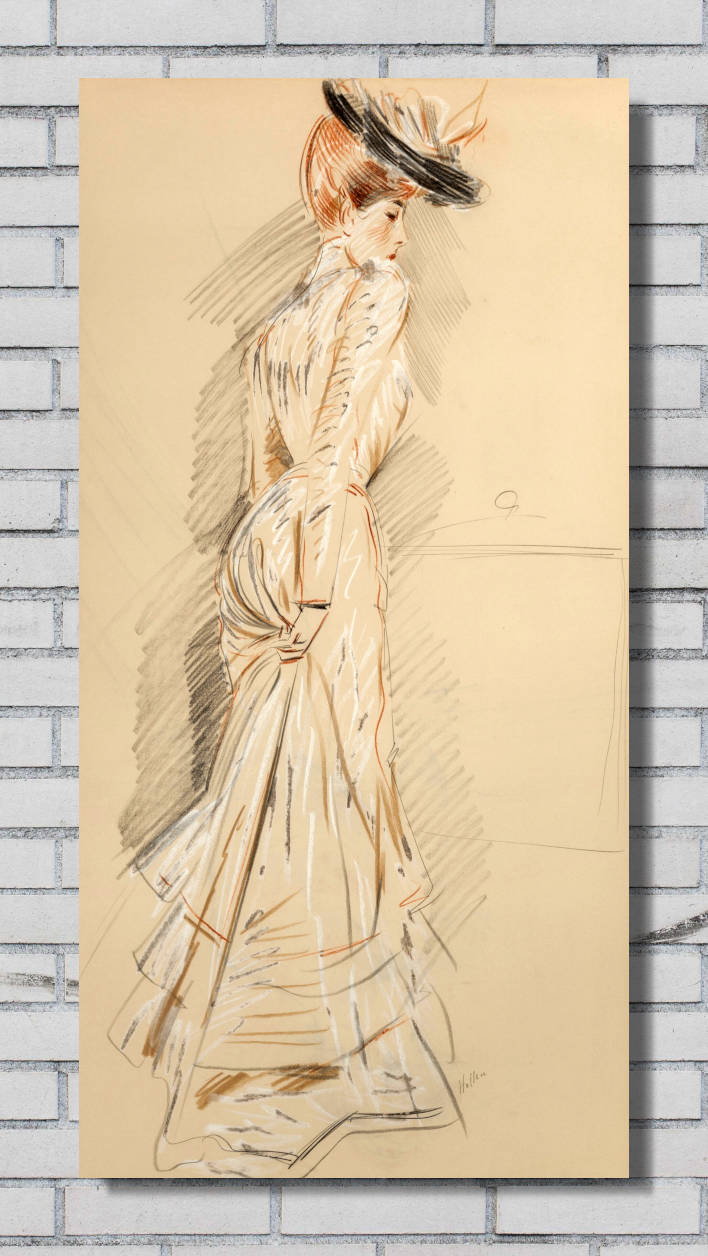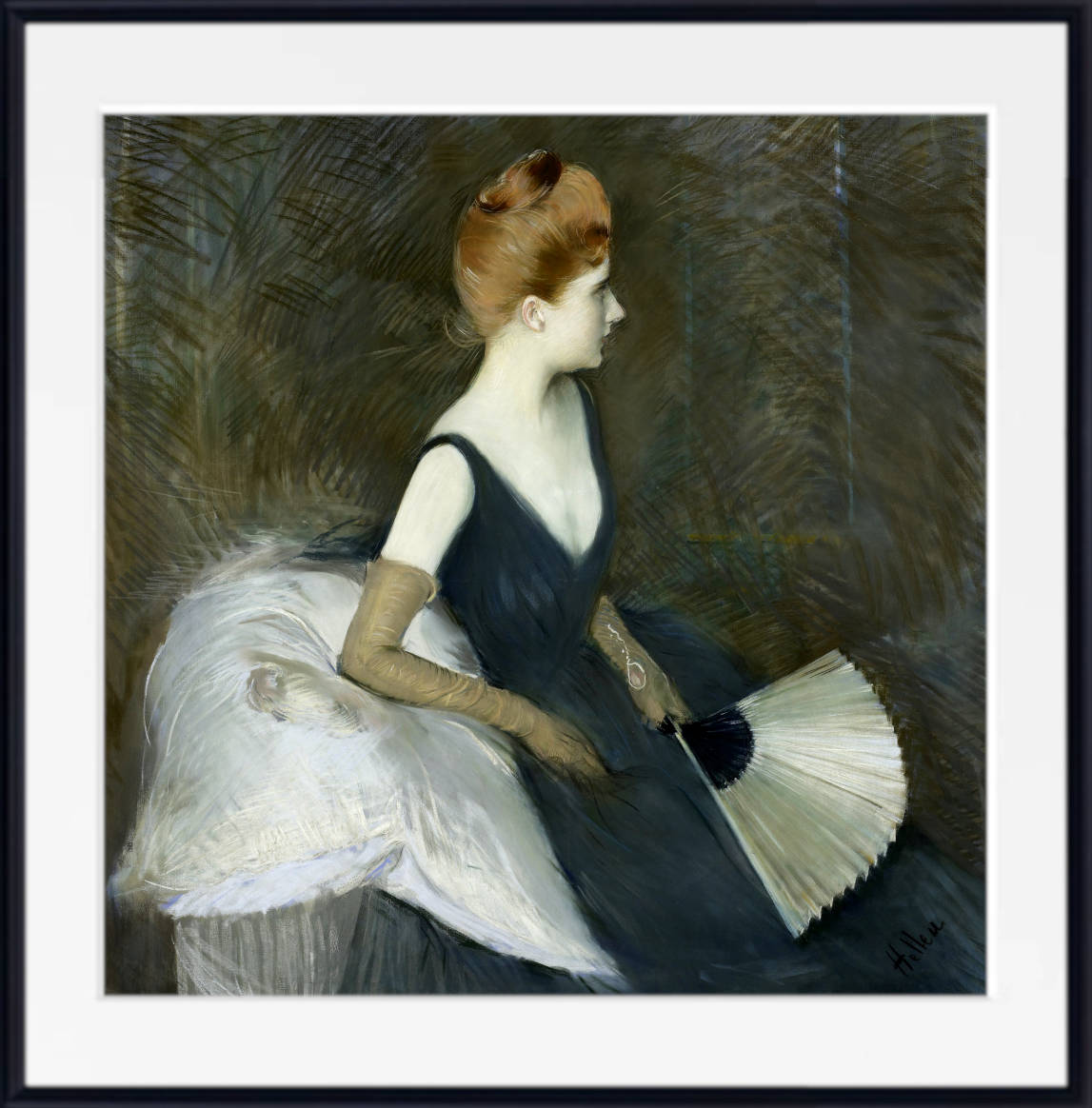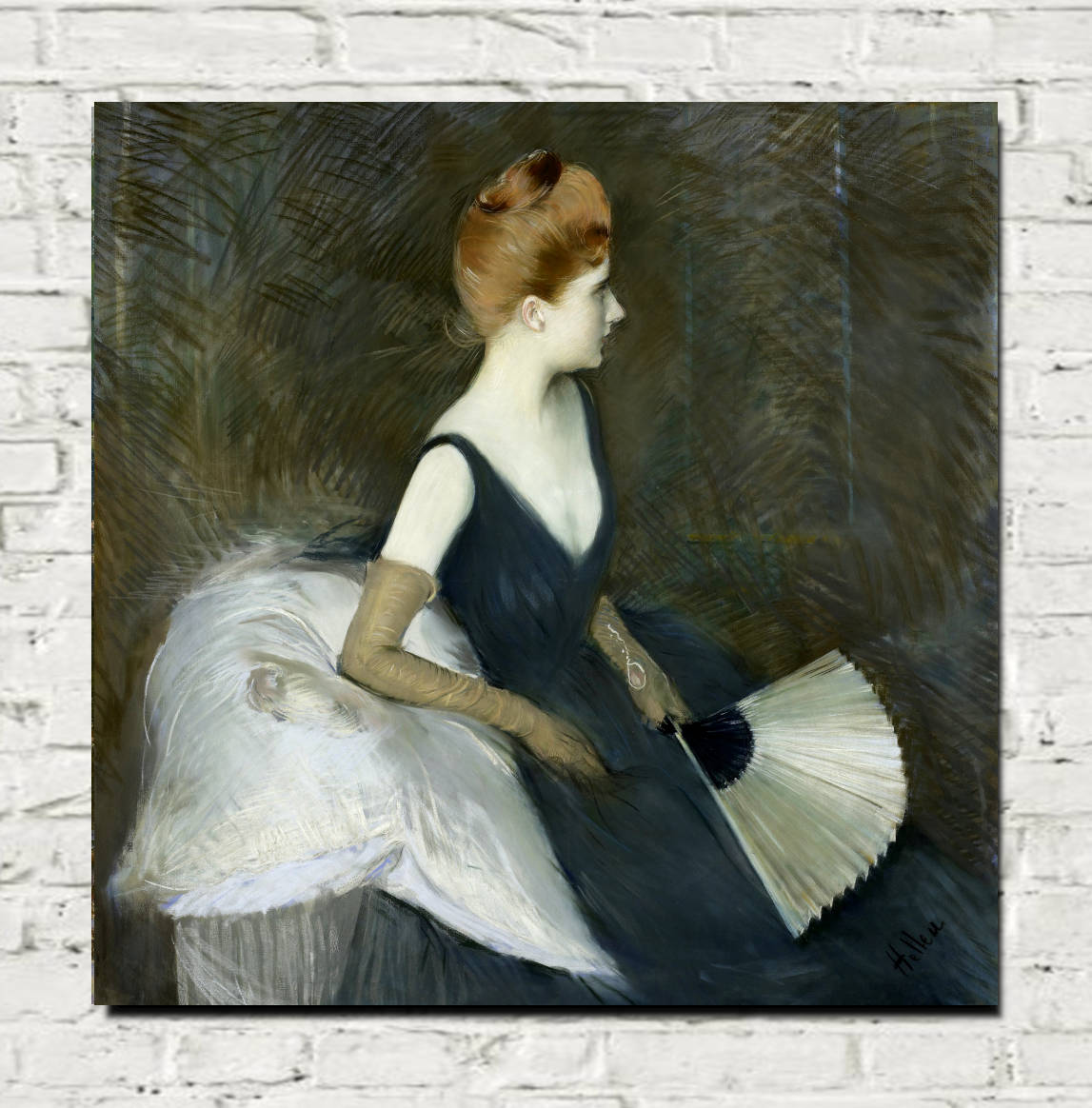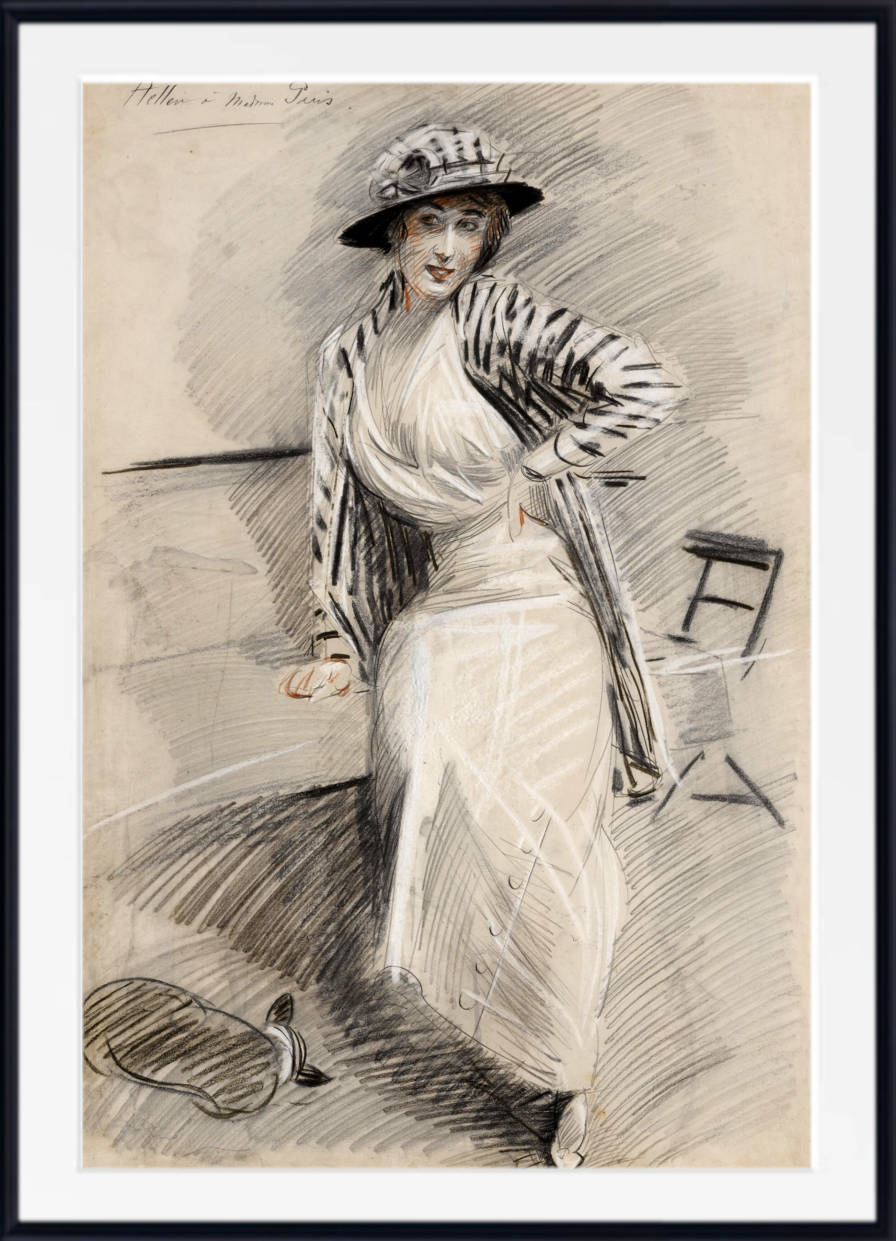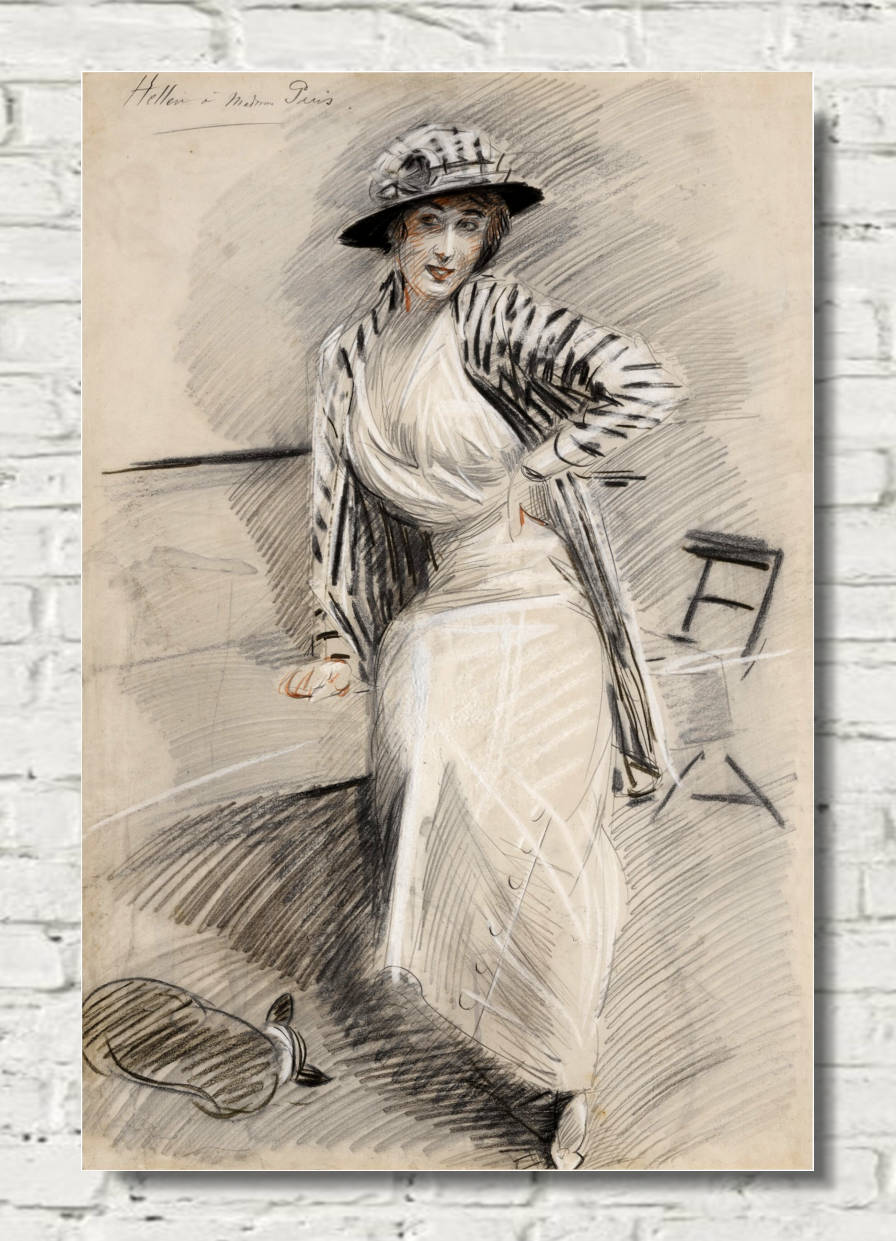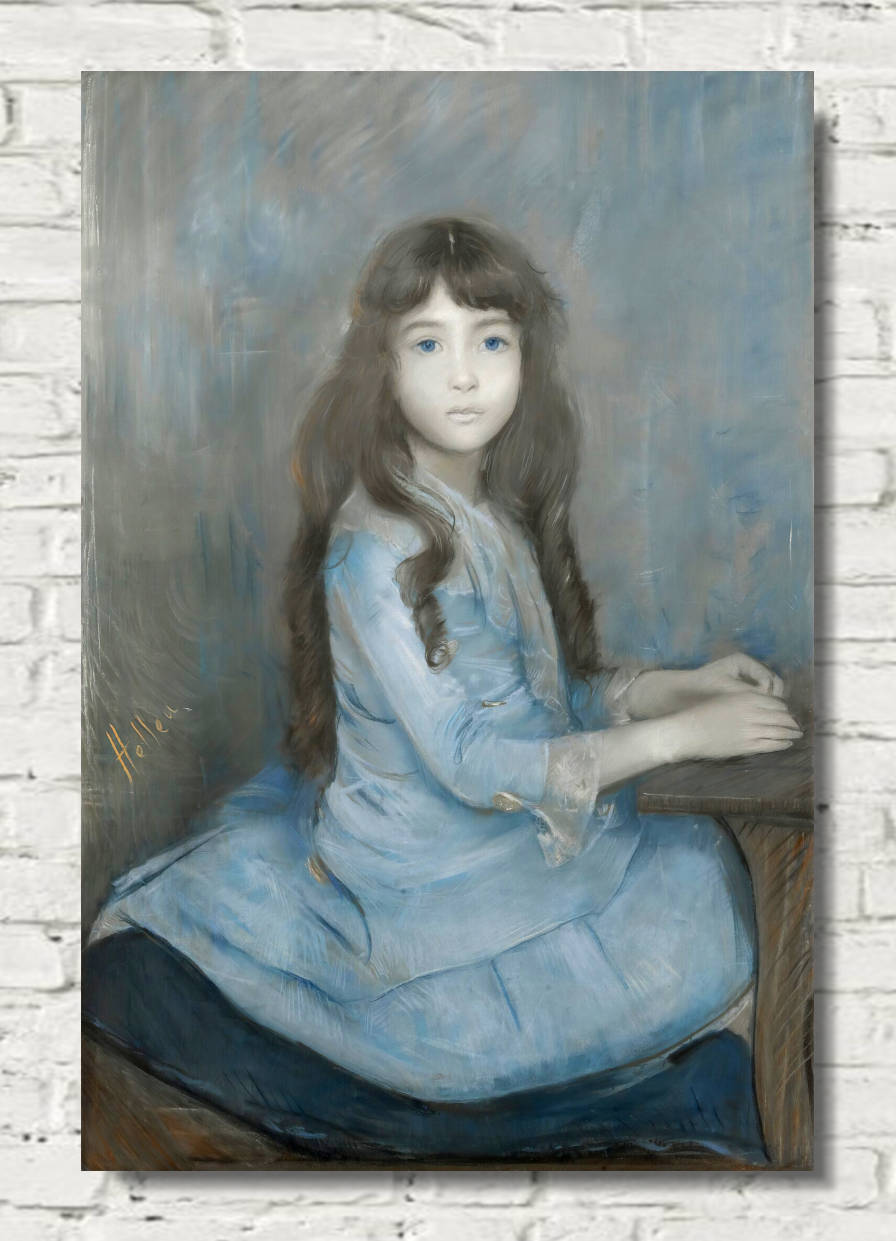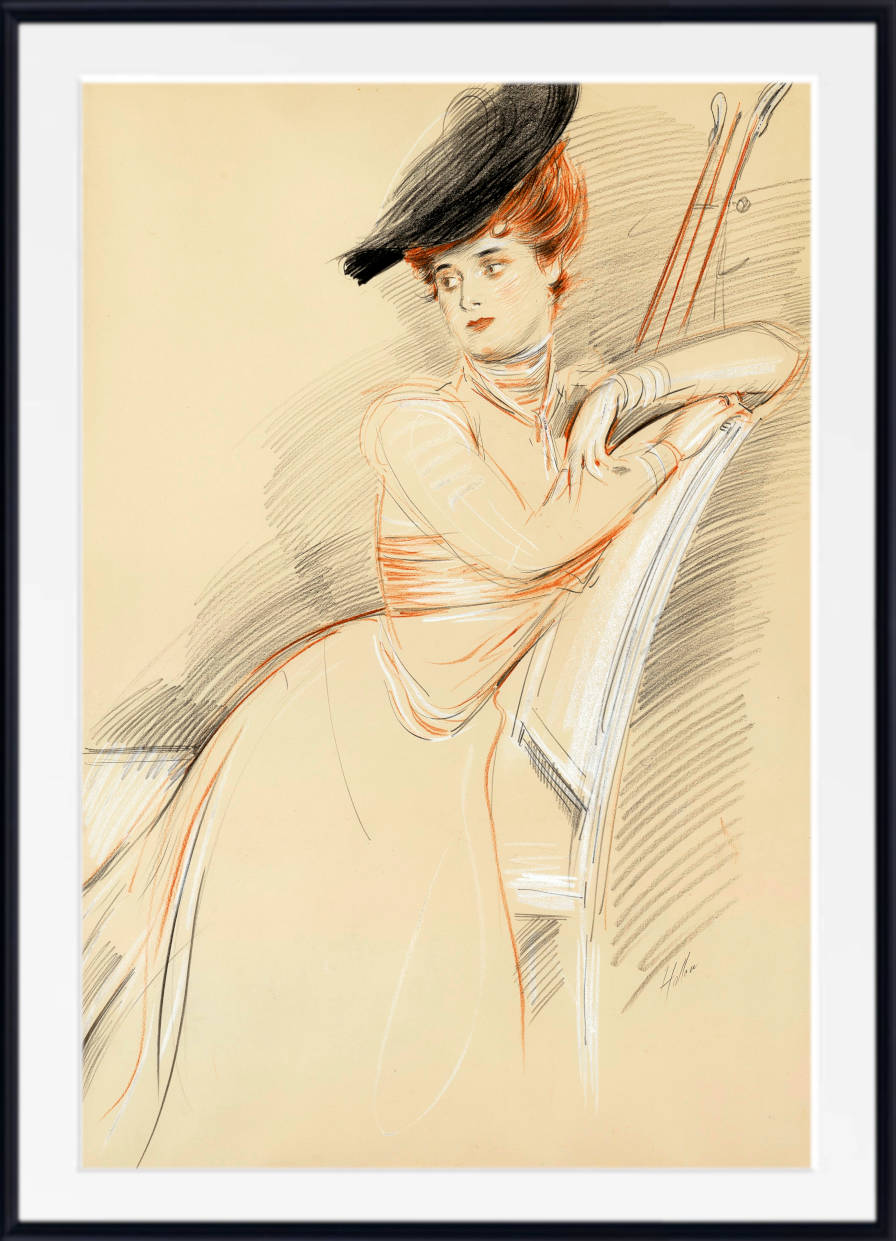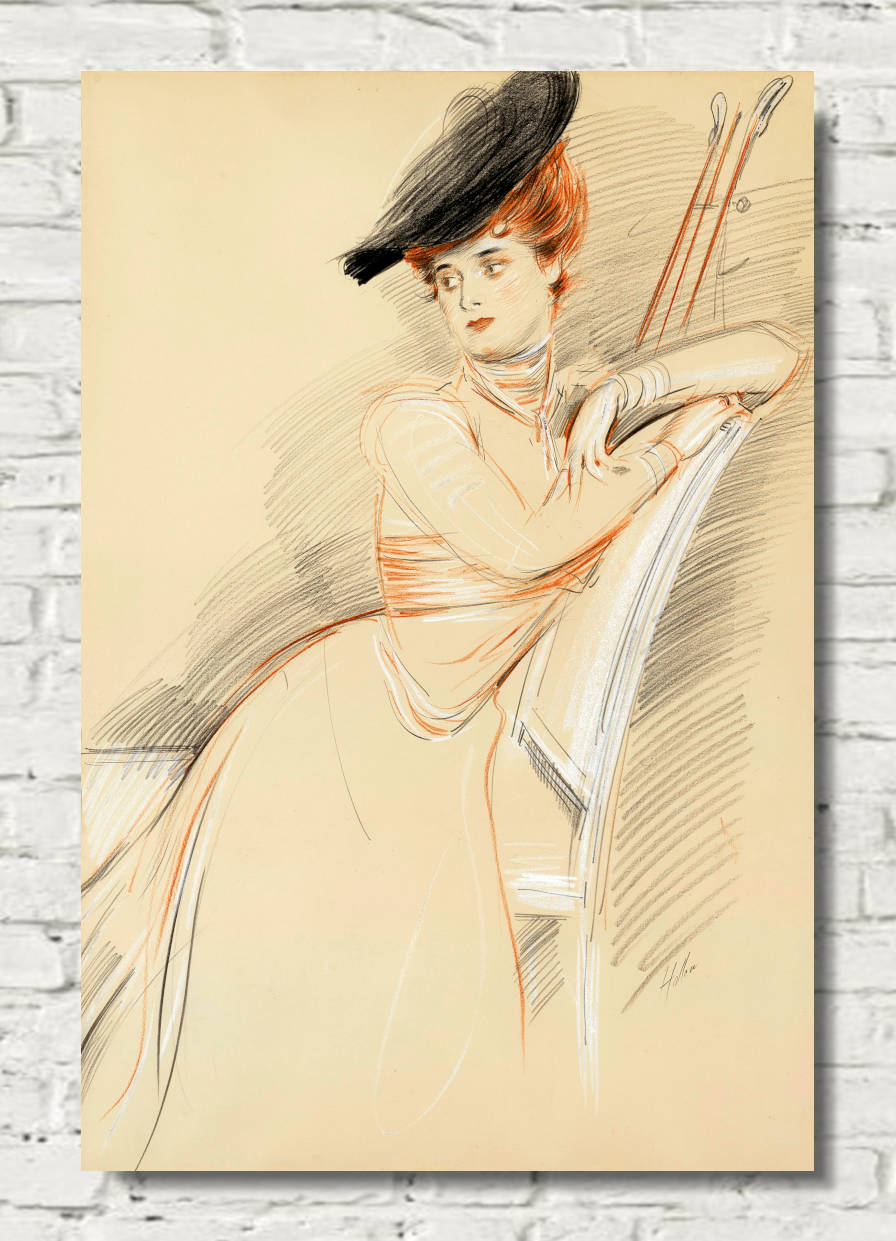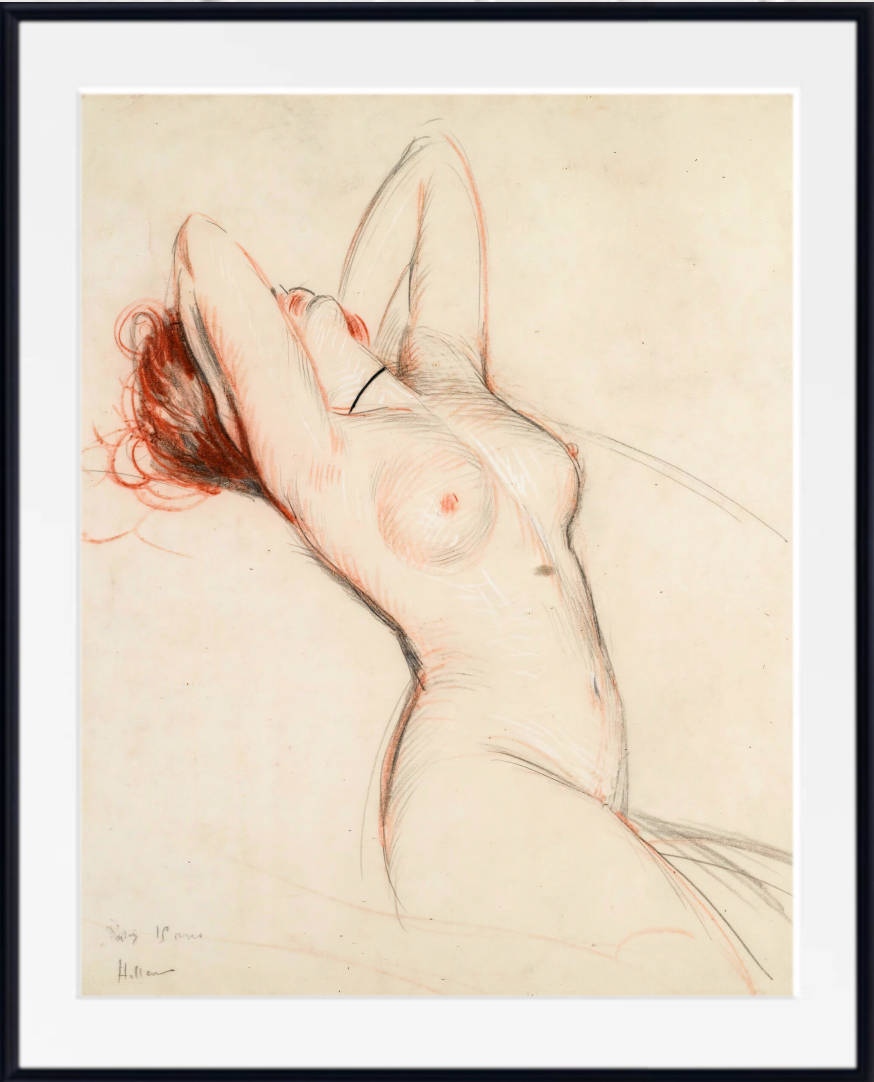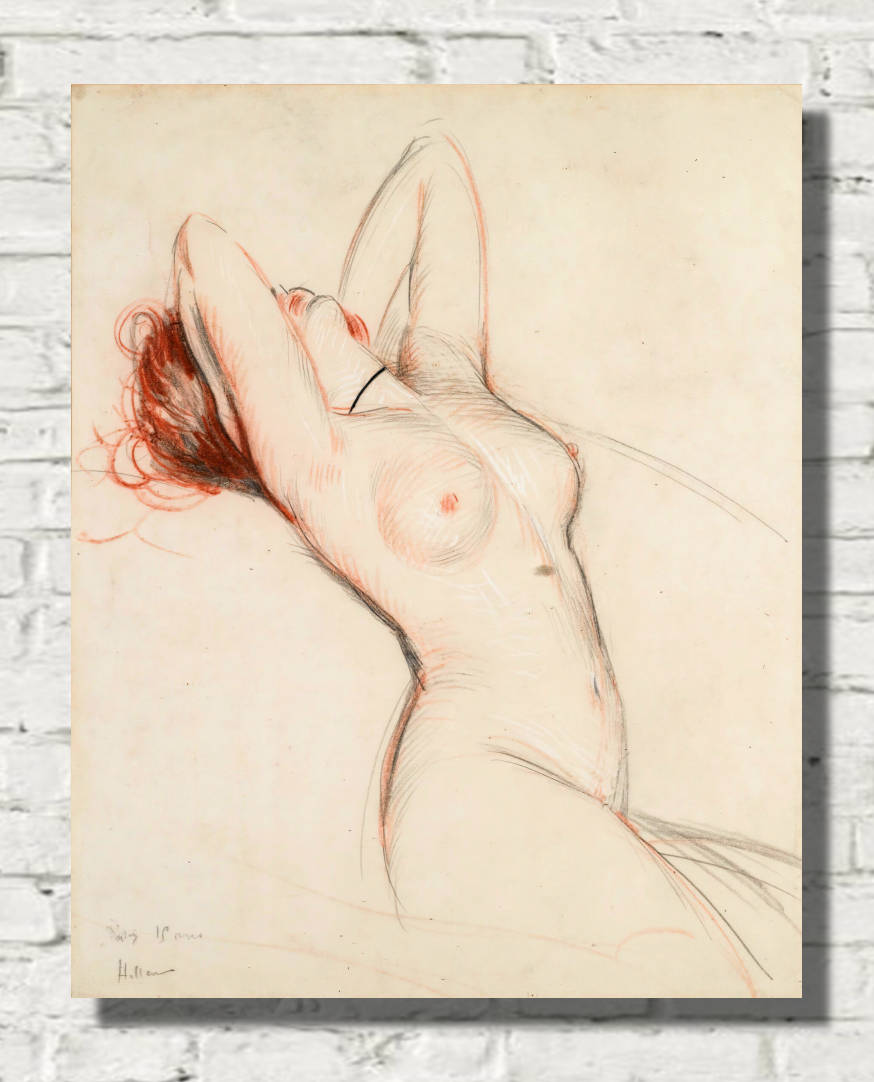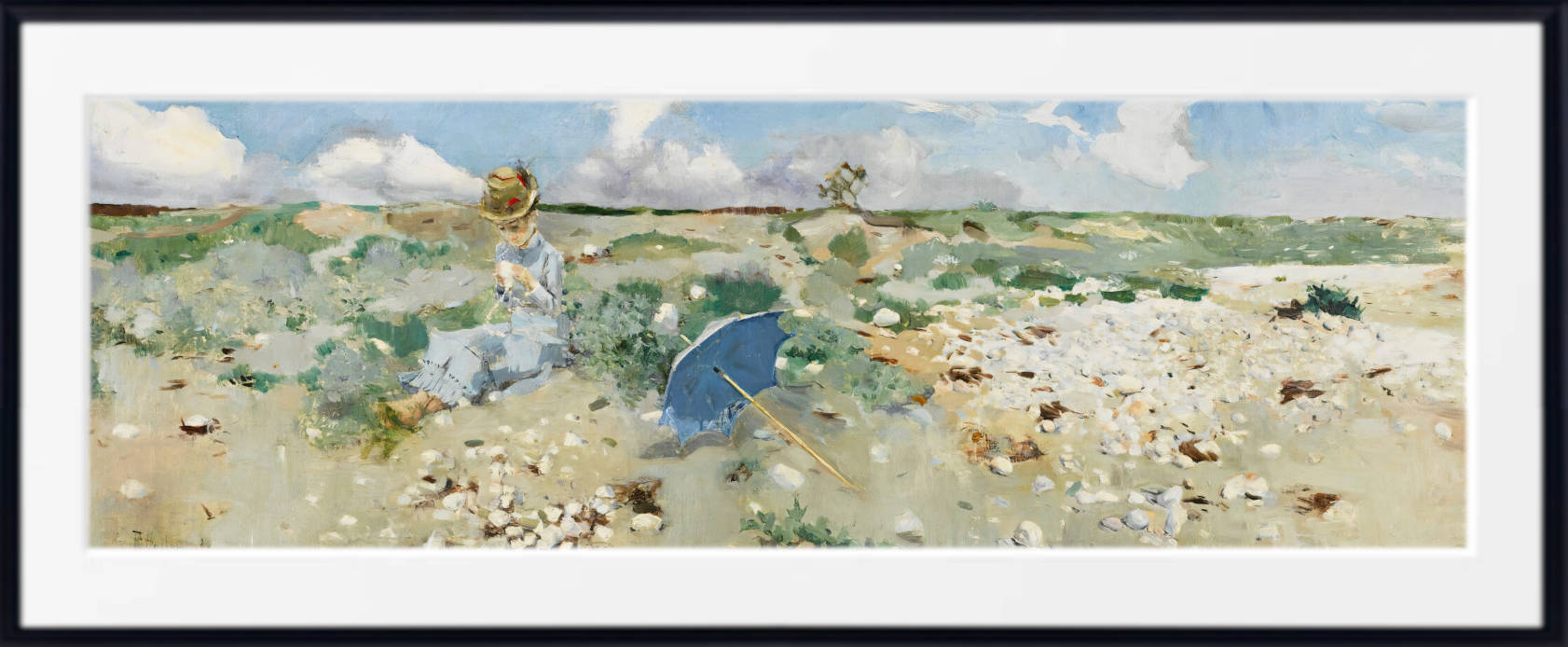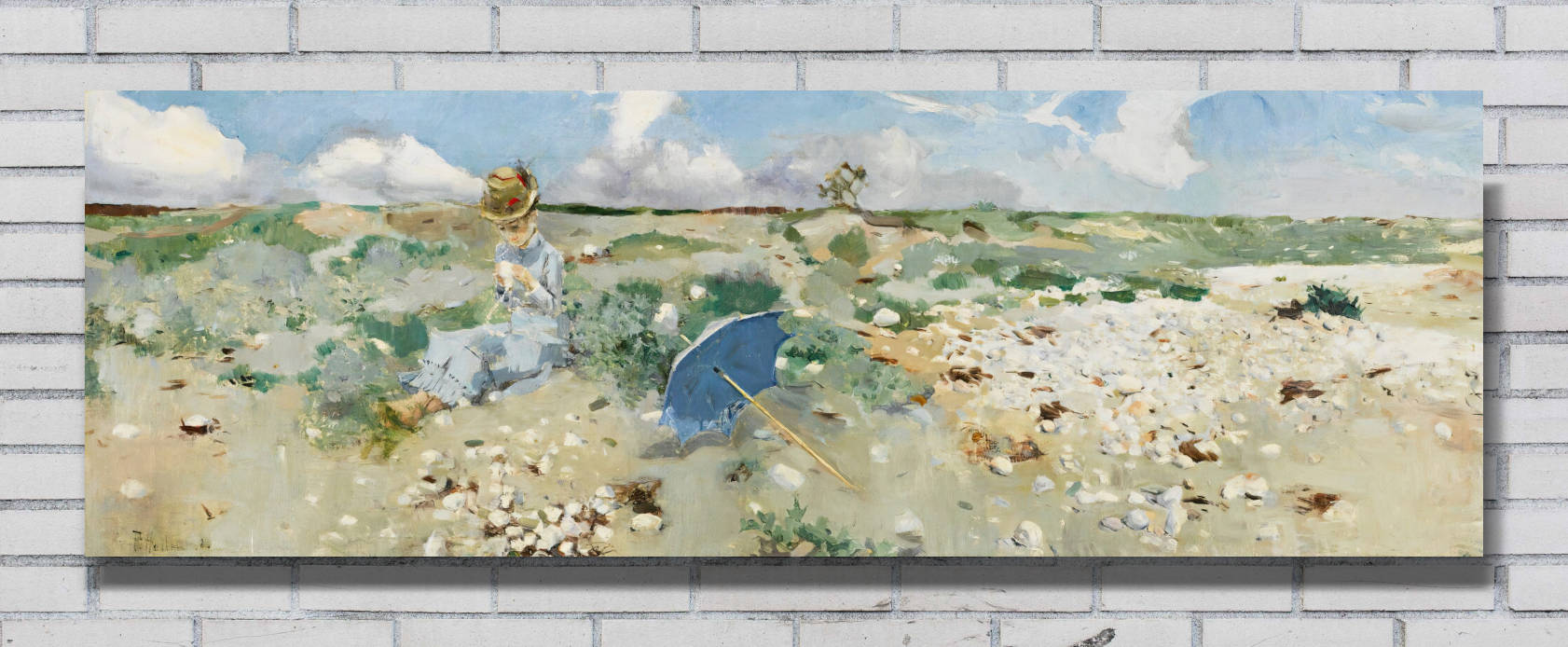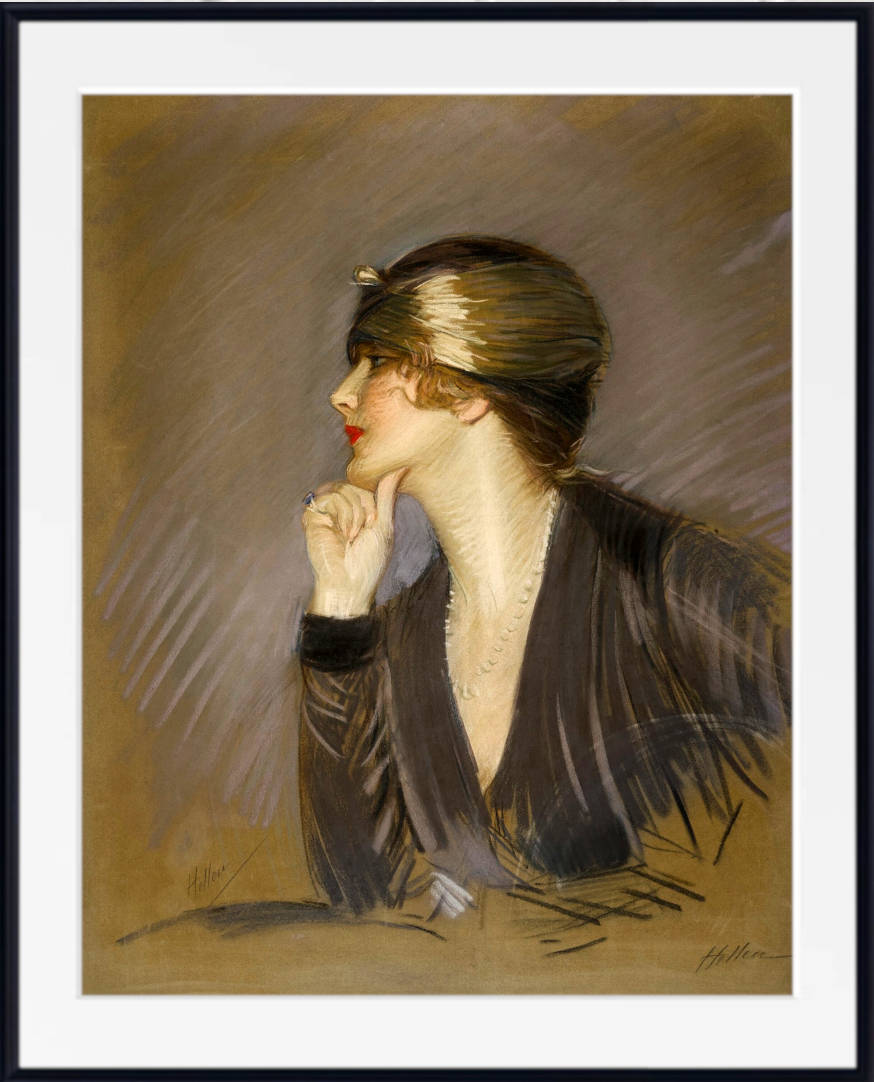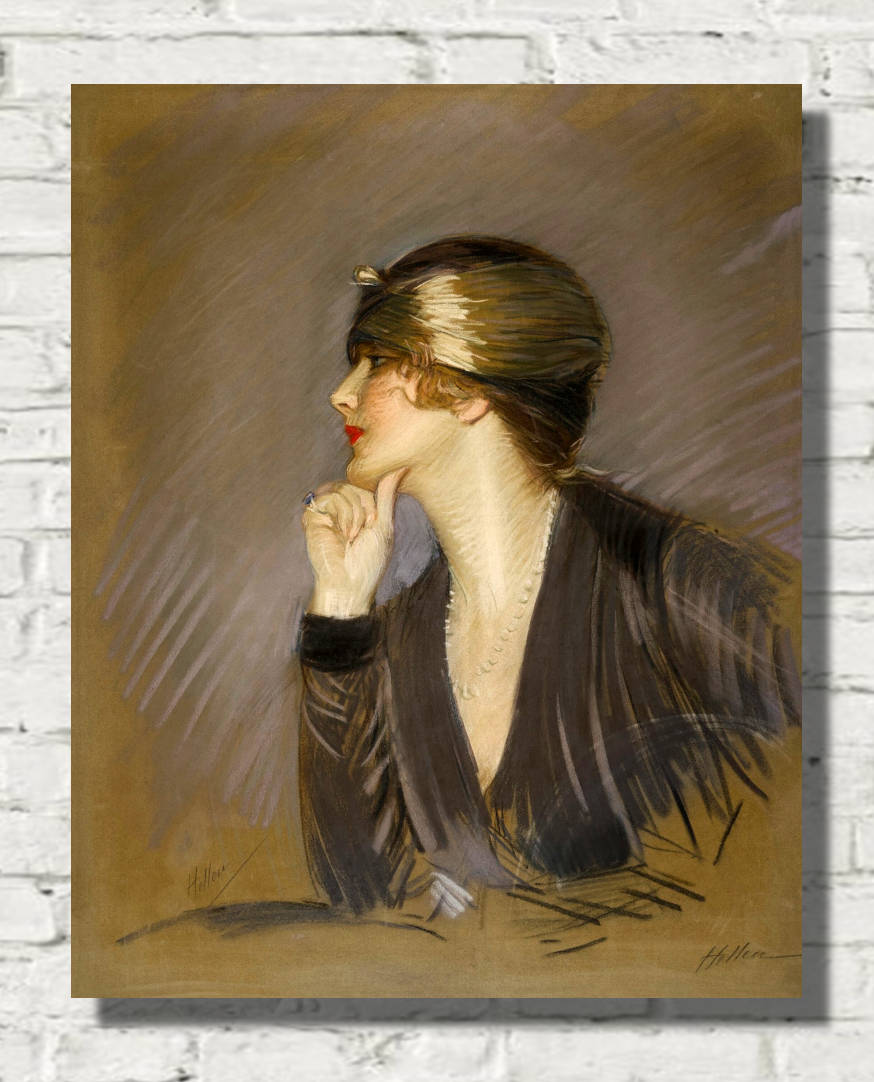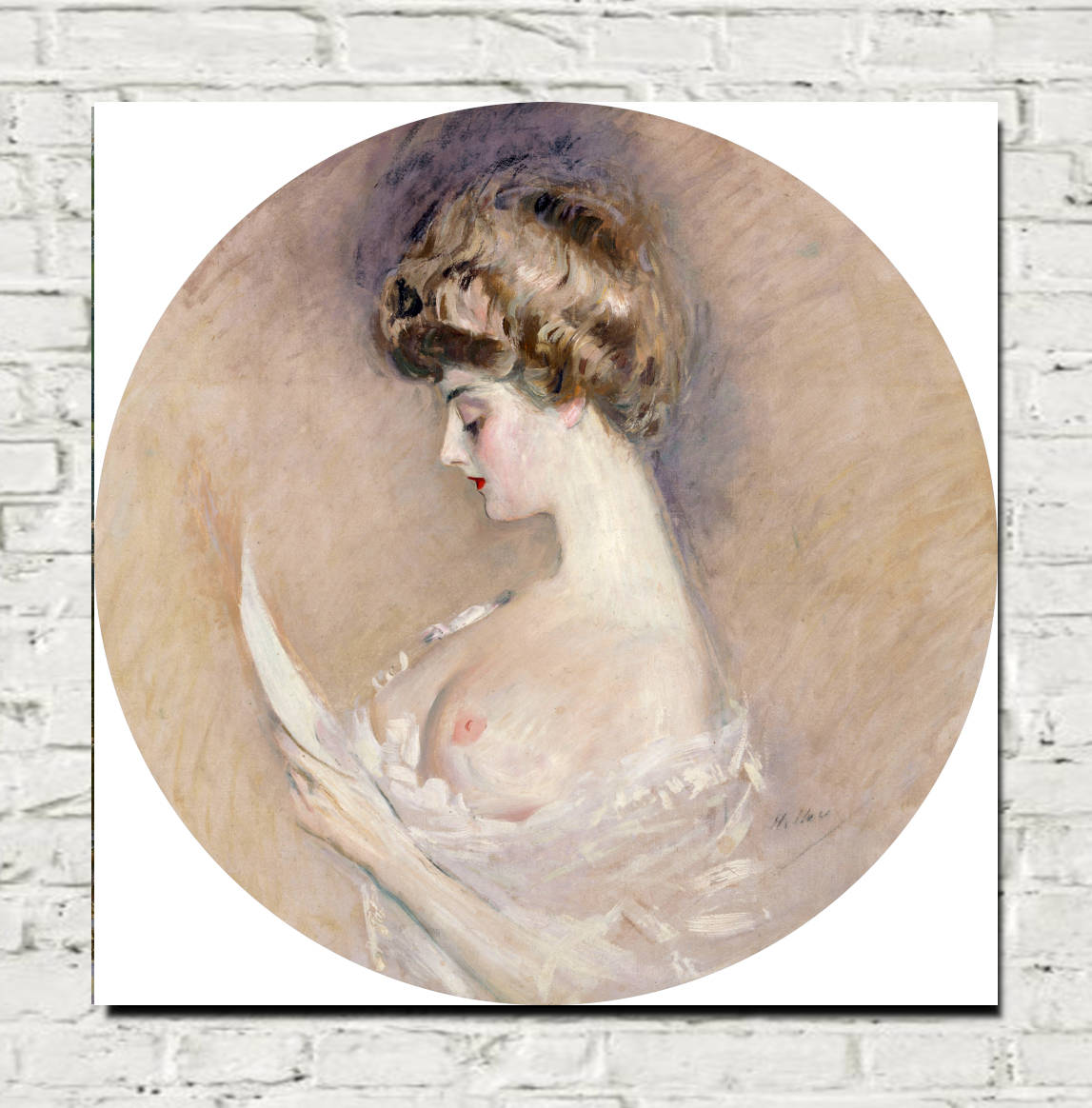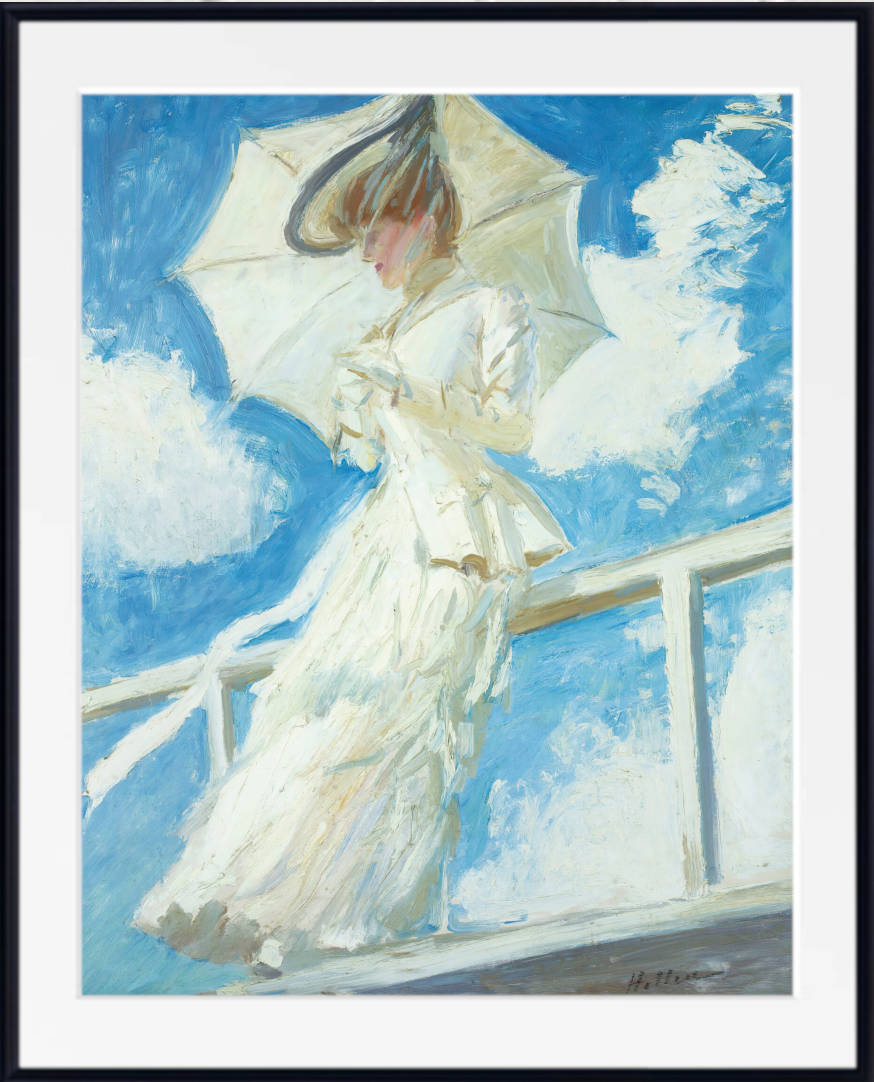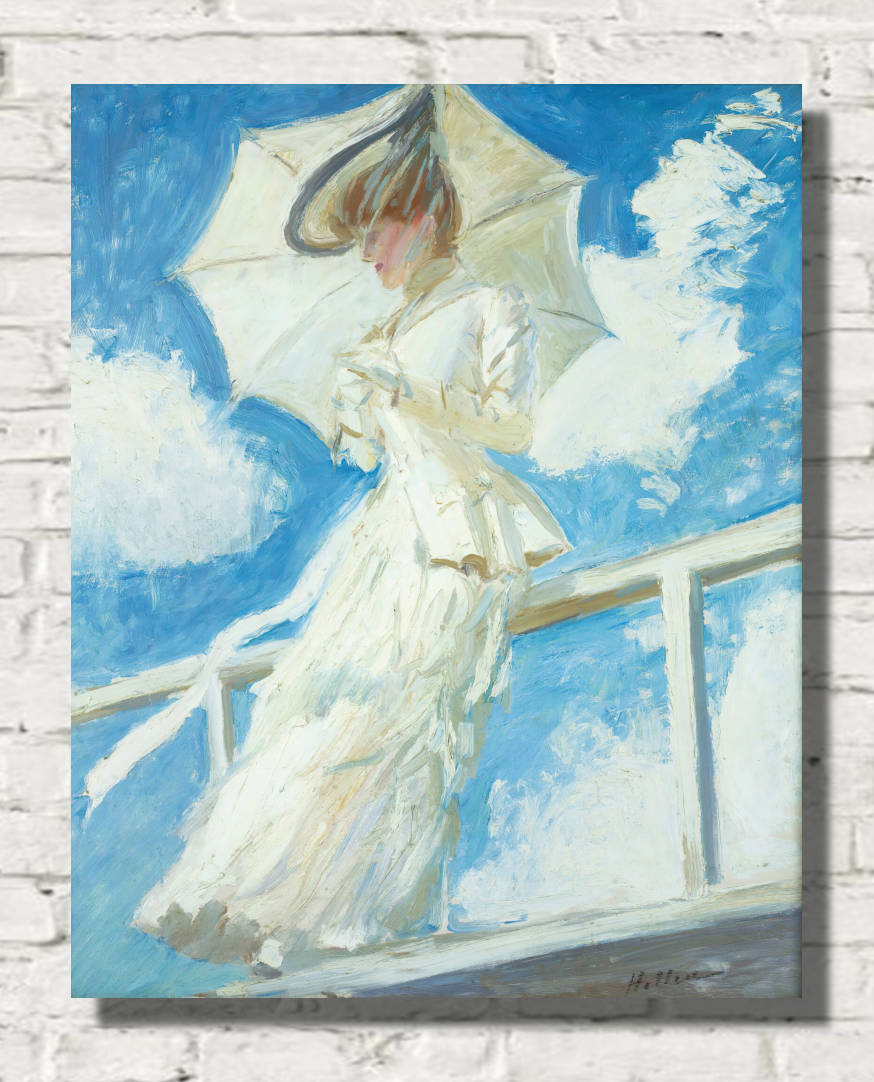Paul-César Helleu (1859-1927) emerged as one of the most captivating artists of the French Belle Époque, renowned for his graceful portraits of elegant women and his masterful technique with the three-pencil method of chalk drawing. His work epitomized the sophistication and glamour of turn-of-the-century Parisian society, while his innovative approach to portraiture earned him recognition among the period's most discerning collectors and critics.
Early Life and Artistic Development
Born in Vannes, Brittany, Helleu demonstrated artistic talent from an early age. At just 16, he enrolled at the École des Beaux-Arts in Paris, where he studied under Jean-Léon Gérôme. During these formative years, he formed crucial friendships with artists who would later become central figures of Impressionism, including John Singer Sargent and Claude Monet. These relationships profoundly influenced his artistic development and future career trajectory.
Technique and Style
Helleu's signature technique involved using three colors of chalk – black, red, and white – on paper, creating portraits of extraordinary vitality and immediacy. This "trois crayons" method, while traditional, was revolutionized by Helleu's swift, confident strokes and modern sensibility. His ability to capture the essence of his subjects with seemingly effortless elegance became his hallmark.
Notable Works
Madame Helleu aboard the yacht 'Bird'
One of Helleu's most intimate works depicts his wife Alice aboard their beloved yacht. The painting showcases his mastery of light and atmosphere, capturing the gentle maritime breeze in Alice's flowing dress and the play of sunlight on the deck. This work exemplifies Helleu's ability to combine the casual with the elegant, creating an atmosphere of refined leisure that characterized the Belle Époque.
Portrait of Consuelo Vanderbilt, Duchess of Marlborough
Perhaps his most famous society portrait, Helleu's rendering of Consuelo Vanderbilt demonstrates his ability to capture both the social status and personal character of his subjects. The work showcases the artist's signature rapid, precise strokes in depicting the American-born duchess's distinctive profile and graceful bearing. This portrait, executed in 1902, remains one of the most celebrated representations of Gilded Age aristocracy.
La Connaisseuse
This sophisticated portrait exemplifies Helleu's talent for capturing the intellectual engagement of his subjects. The work depicts a woman examining an artwork or print, highlighting not just her physical beauty but her cultural sophistication. The composition demonstrates Helleu's masterful handling of light and shadow, particularly in the subject's contemplative expression.
Artistic Legacy
Helleu's influence extended beyond portraiture into decorative arts – he designed the celestial ceiling of New York's Grand Central Terminal in 1912, a testament to his versatility and vision. His work bridged the gap between traditional portraiture and modern sensibility, influencing generations of artists who followed.
Social Connections and Patronage
Helleu's charm and artistic talent earned him entry into the highest echelons of French and international society. His friendship with Marcel Proust, who partially based the character Elstir in "À la recherche du temps perdu" on Helleu, speaks to his cultural influence. His patrons included some of the most prominent families of the era, from the Vanderbilts to European nobility.
References
- Stevens, Arthur. "Paul César Helleu: Master of the Portrait." Burlington Magazine, 1998.
- Montesquiou, Robert de. "Paul Helleu, Peintre et Graveur." Paris: Floury, 1913.
- Sotheby's. "Portrait of Consuelo Vanderbilt." Lot Essay, Important European Art Sale, 2005.
- Christie's. "La Belle Époque: Works from the Estate of Paul César Helleu." Auction Catalog, 2012.
- Proust, Edmund. "Helleu: Artist and Man." London: Grant Richards, 1924.
- Vanderbilt, Consuelo. "The Glitter and the Gold." New York: Harper & Brothers, 1953.
- Goncourt, Edmond de. "Journal des Goncourt." Paris: Charpentier, 1891-1896.

